Groq
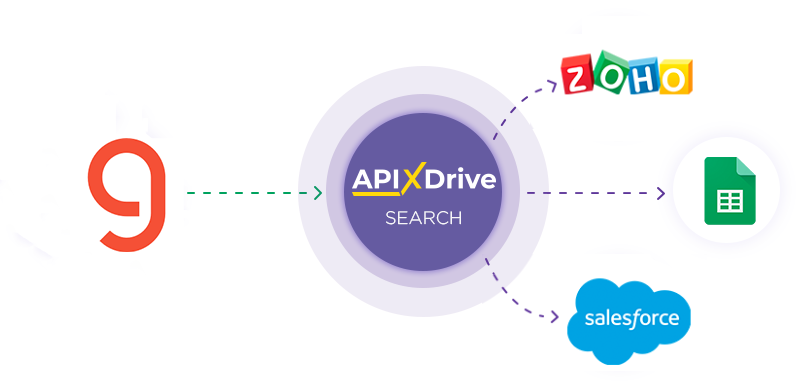
Integration with Groq is implemented as a separate AI TOOLS block, which can be placed between the Source and Destination of data. This will allow you to create a query based on data from the Data Source and pass data from Groq to the Data Ingest fields. This way you can automatically receive data from Groq and transfer it to the services and systems that you use.
The function allows you to create a request in Groq and send the result of the request to Data Destination.
Navigation:
Connecting Google Sheets as a Data Source:
1. What data can you get from Google Sheets?
2. How to connect your Google Sheets account to ApiX-Drive?
3. Select the table and sheet from which rows will be unloaded.
4. An example of data that will be transferred from Google Sheets.
Connecting Groq:
1. What data can be obtained from Groq?
2. How to connect your Groq account to ApiX-Drive?
3. How to configure data search in Groq in the selected action?
4. An example of data that will be transferred from Groq.
Setting up row updates in Google Sheets:
1. What will the Google Sheets integration do?
2. How to connect your Google Sheets account to ApiX-Drive?
3. How can I configure the selected action to transfer data to Google Sheets?
4. Example of data that will be sent to your Google Sheets.
5. Auto-update and communication interval.
Setting up Data SOURCE: Google Sheets
Let's look at how the function of requesting data from Groq and sending the result to Google Sheets works.
First, you need to create a new connection.

Select the system as the Data Source. In this case, you must specify Google Sheets.

Next, you need to specify the action "Get ROWS (new)".
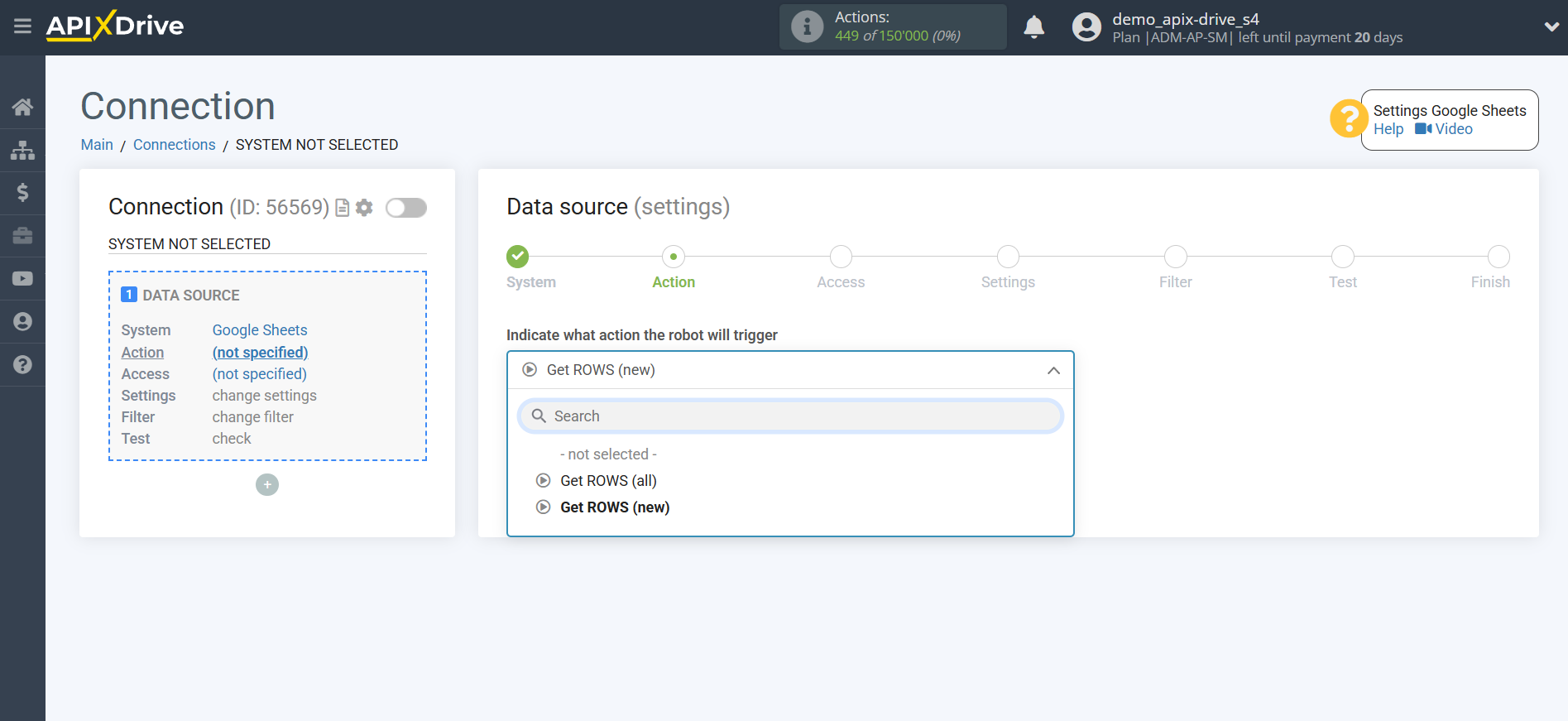
The next step is to select the Google Sheets account from which the data will be uploaded.
If there are no logins connected to the system, click "Connect account".
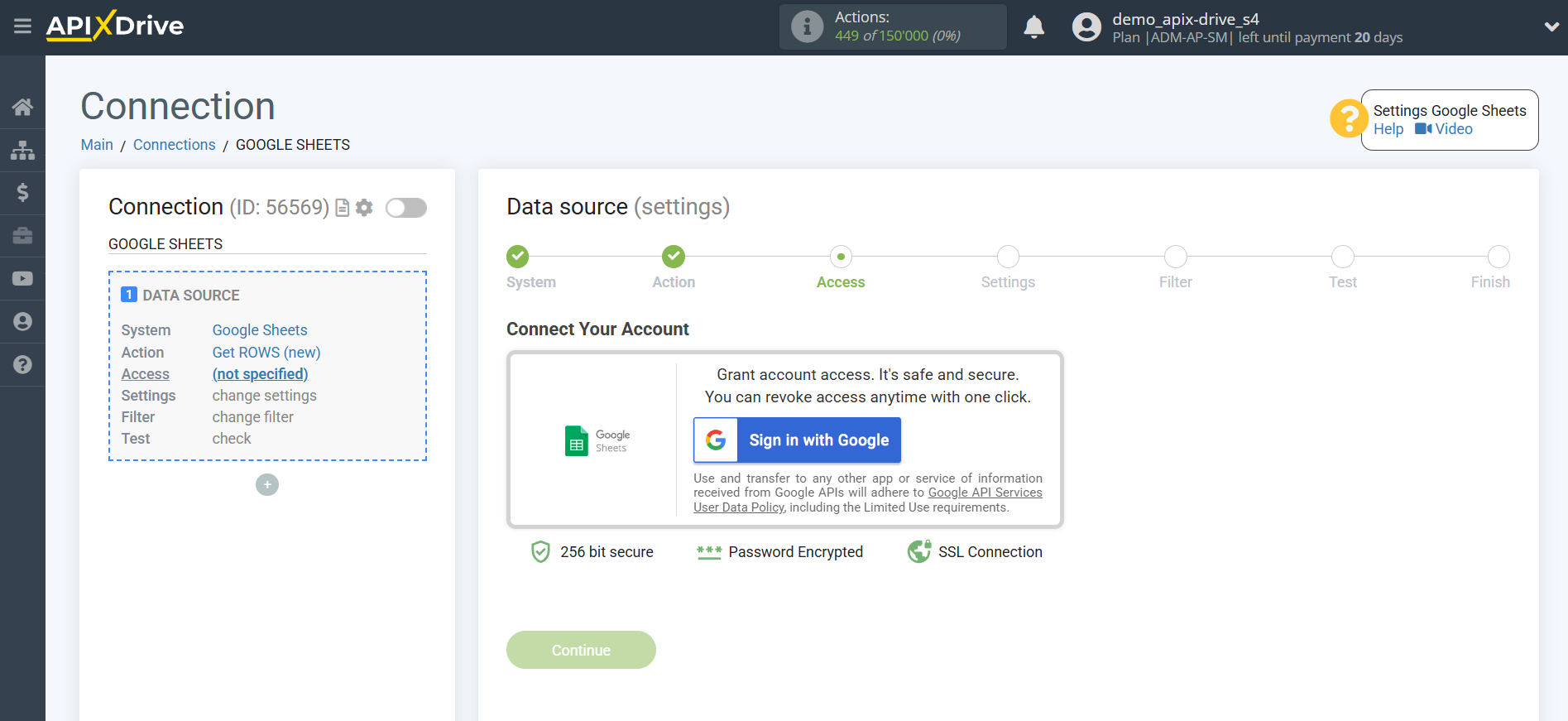
Select which account you want to connect to ApiX-Drive and provide all permissions to work with this account.
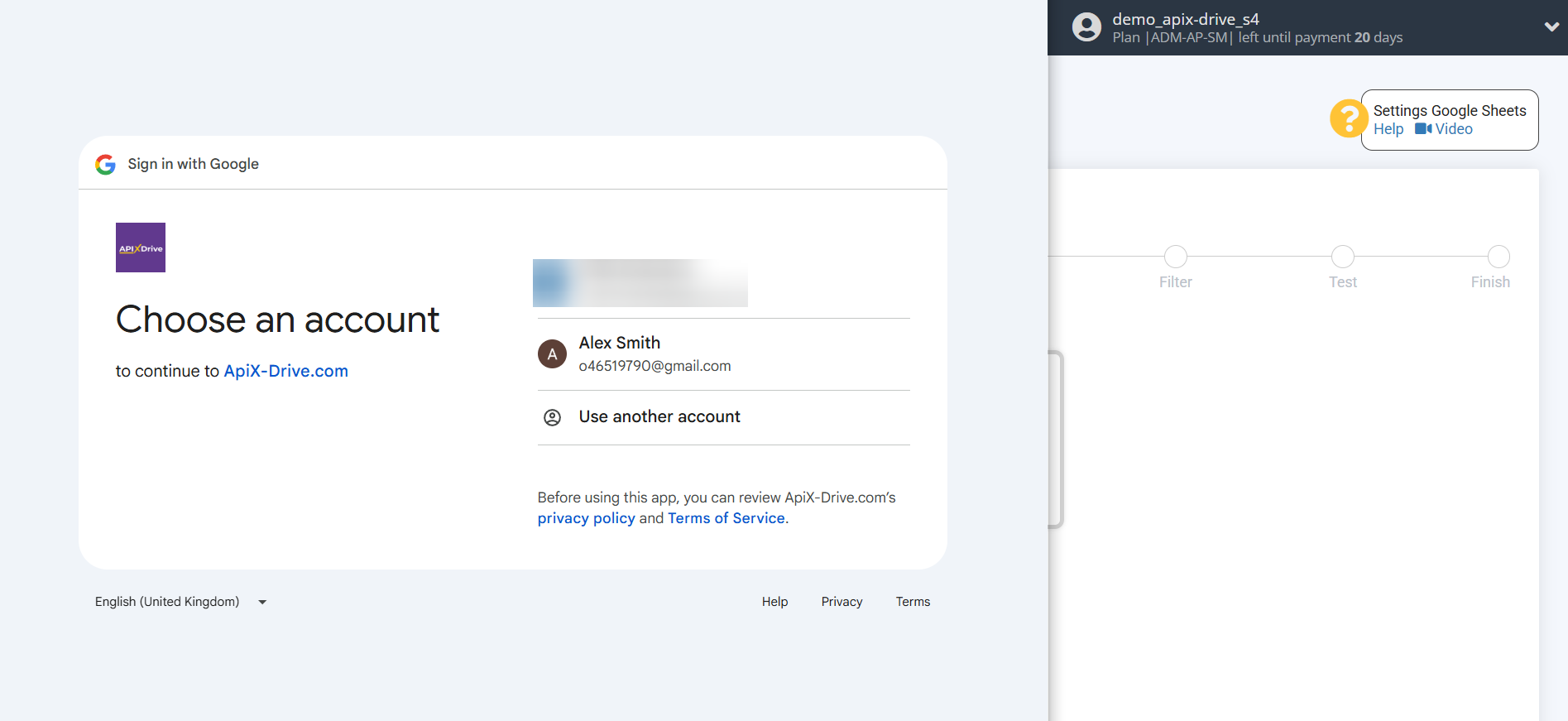
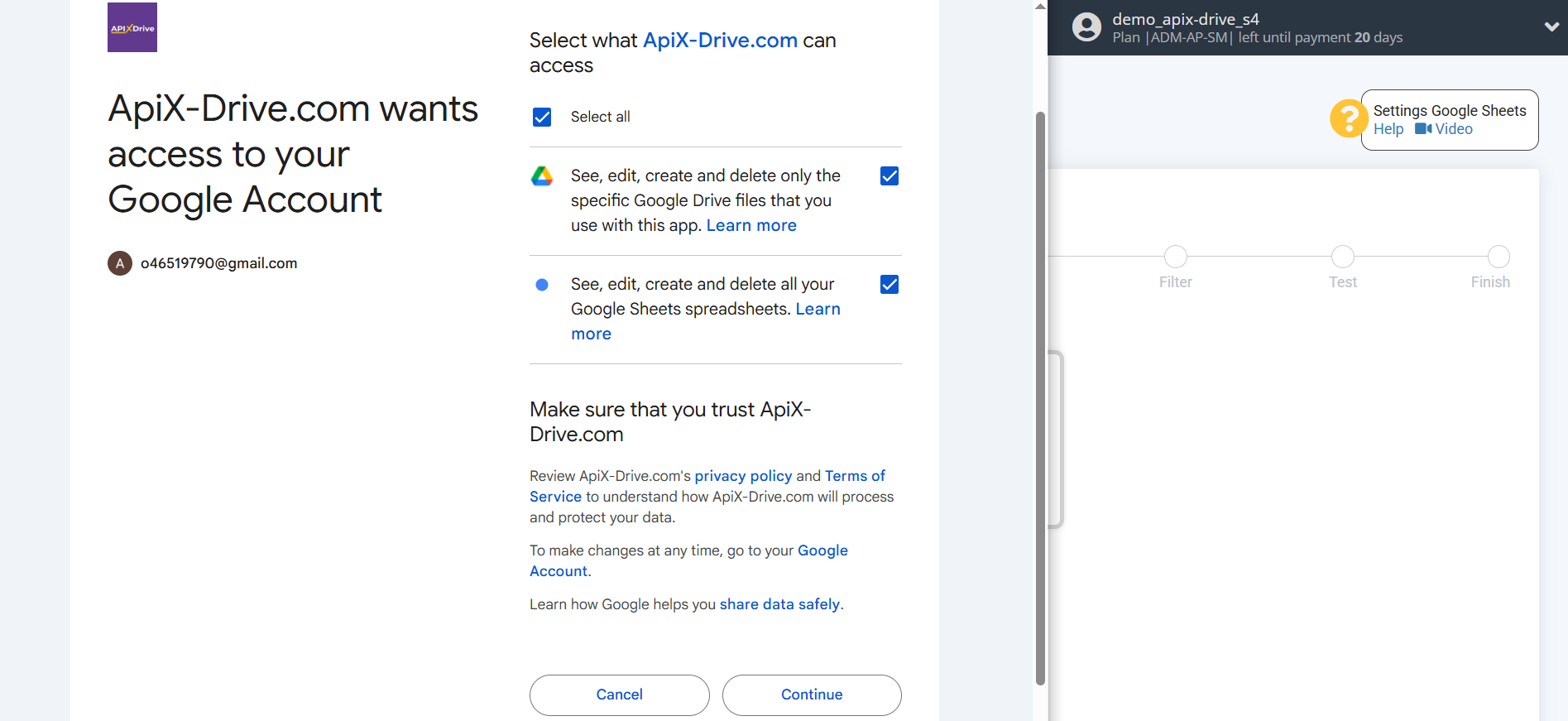

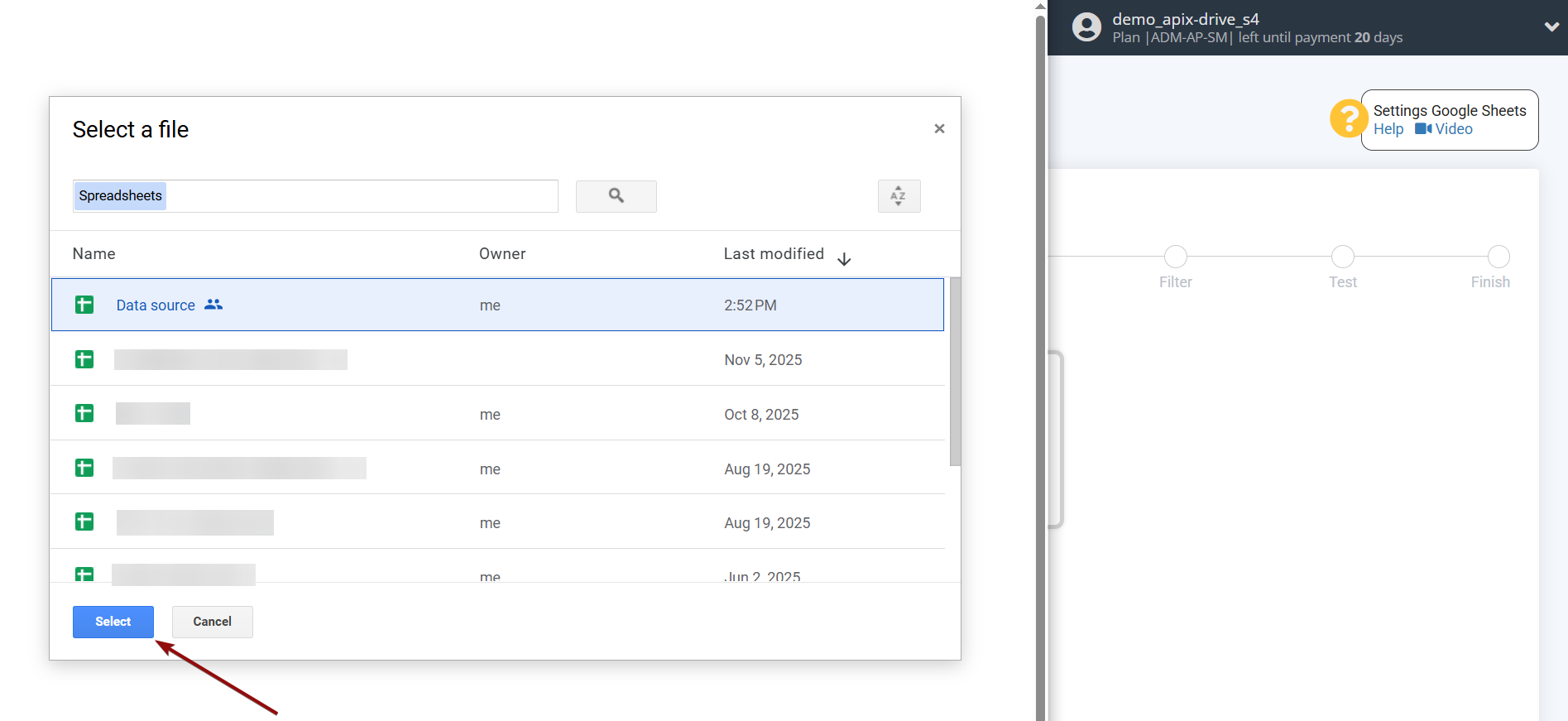
When the connected account appears in the "active accounts" list, select it for further work.
Attention! If your account is on the "inactive accounts" list, check your access to this login!
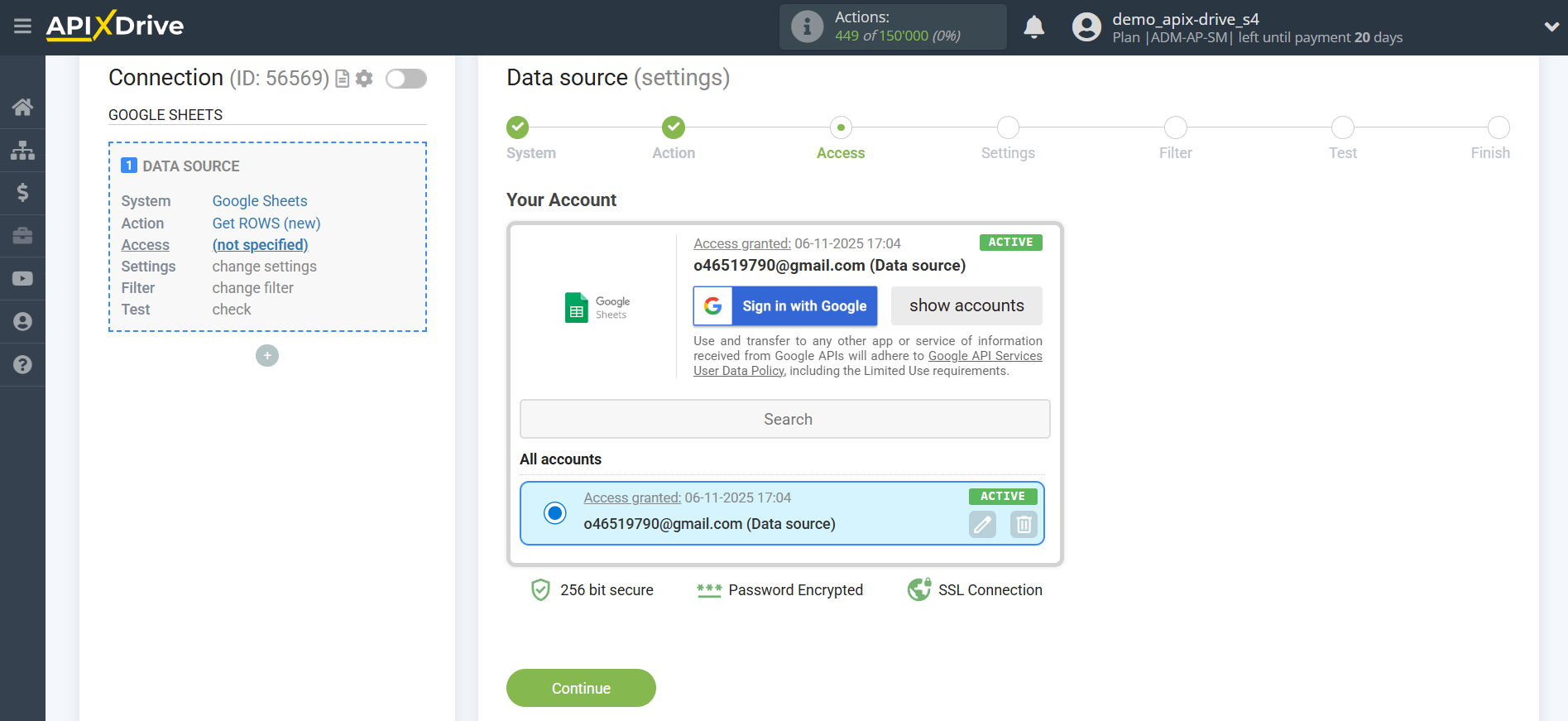
Select the Google Sheets table and sheet where the data you need is located.
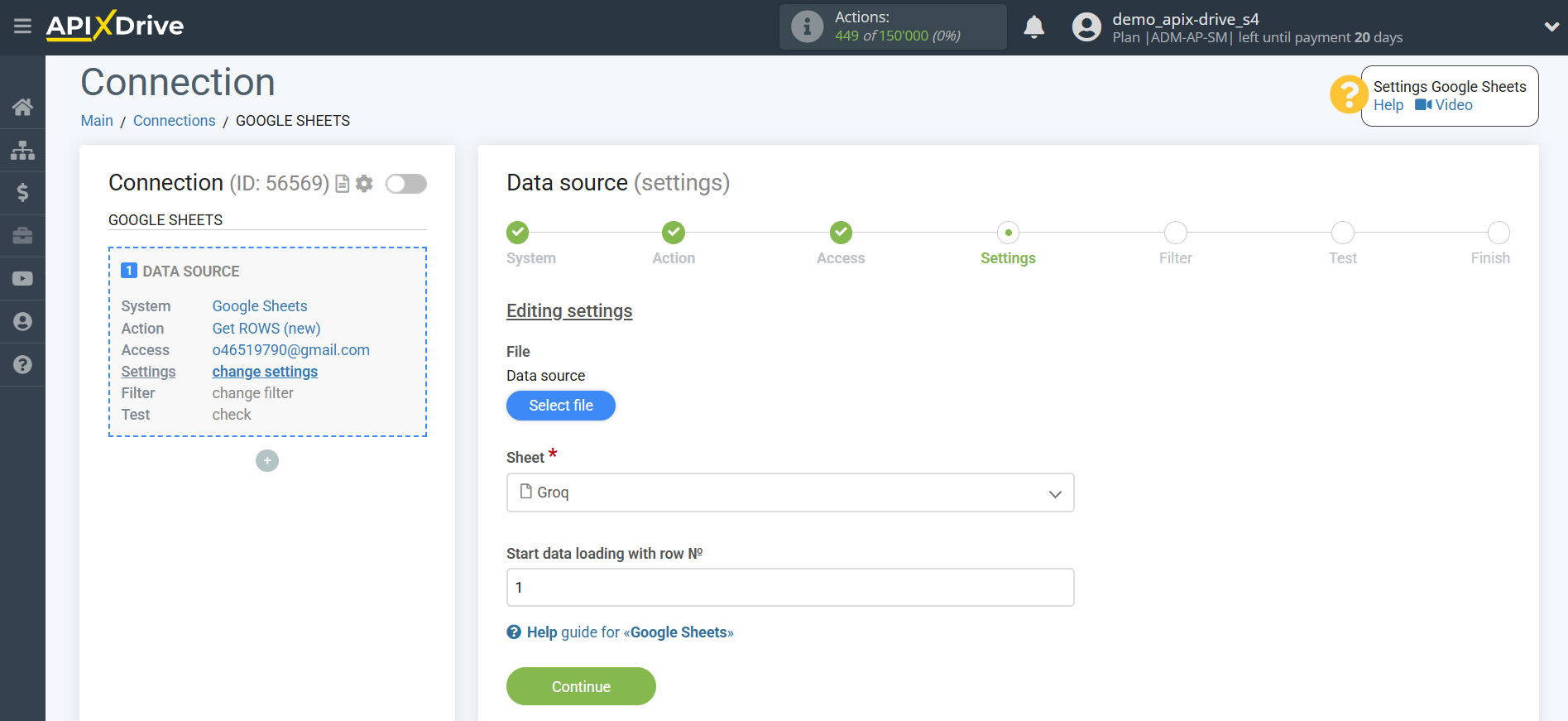
If necessary, you can set up a Data Filter, or click "Continue" to skip this step.
To find out how to setup the Data Filter, follow the link: https://apix-drive.com/en/help/data-filter
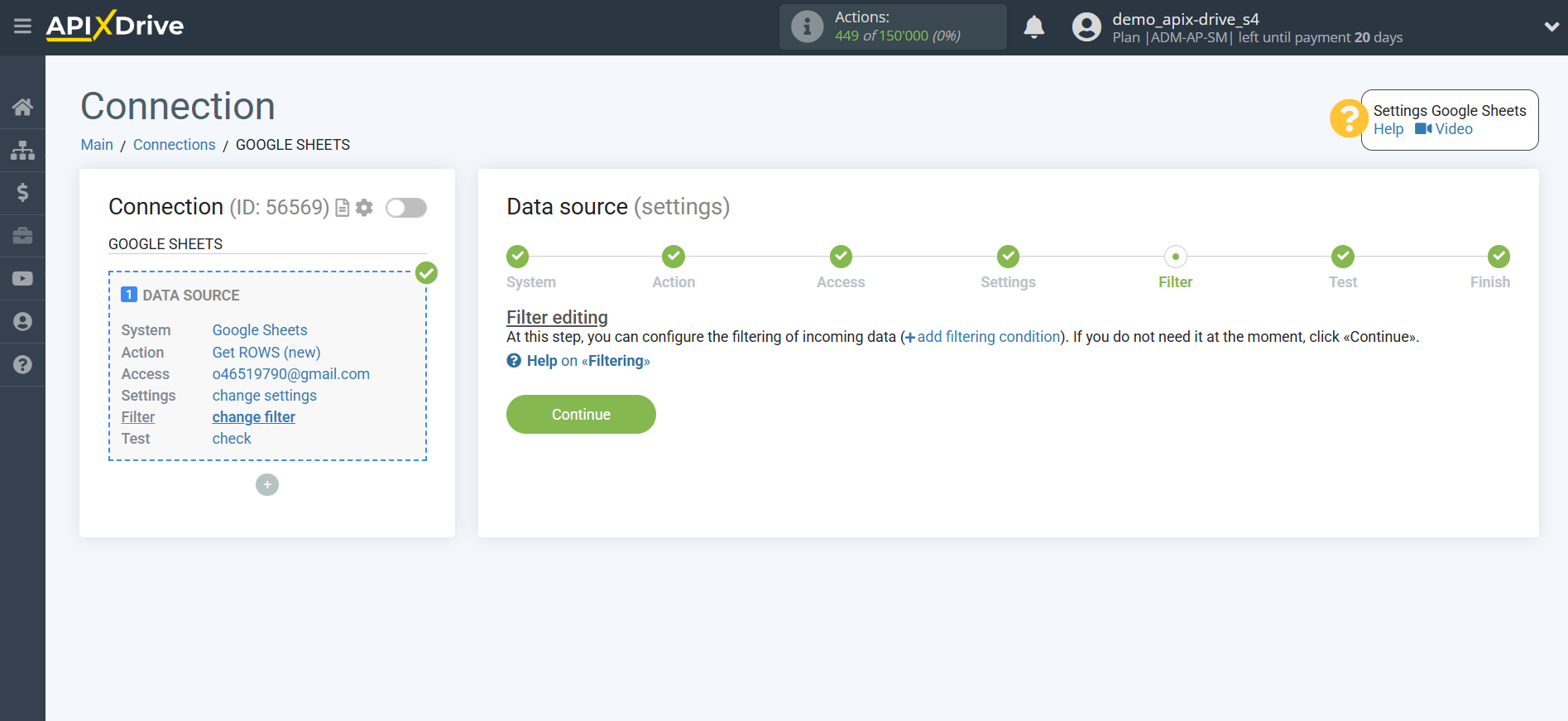
Now you can see the test data for one of the rows in your Google Sheets.
If you want to update the test data - click "Load test data from Google Sheets".
If you want to change the settings - click "Edit" and you will go back one step.

Now we connect the additional Groq. To do this, click on “+” and select “AI TOOLS” from the list.
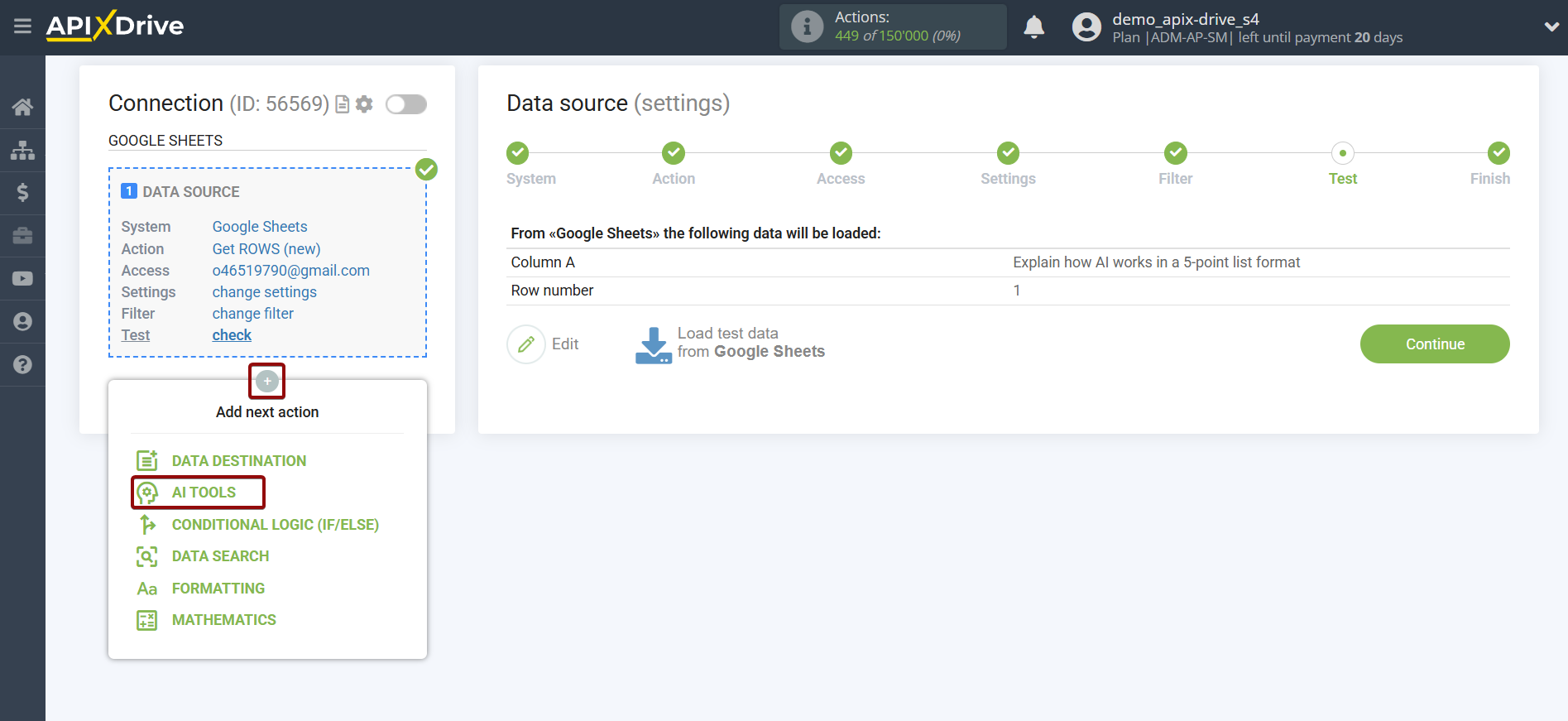
Setting up Groq
Select "Groq" as the system in which the search will be performed.
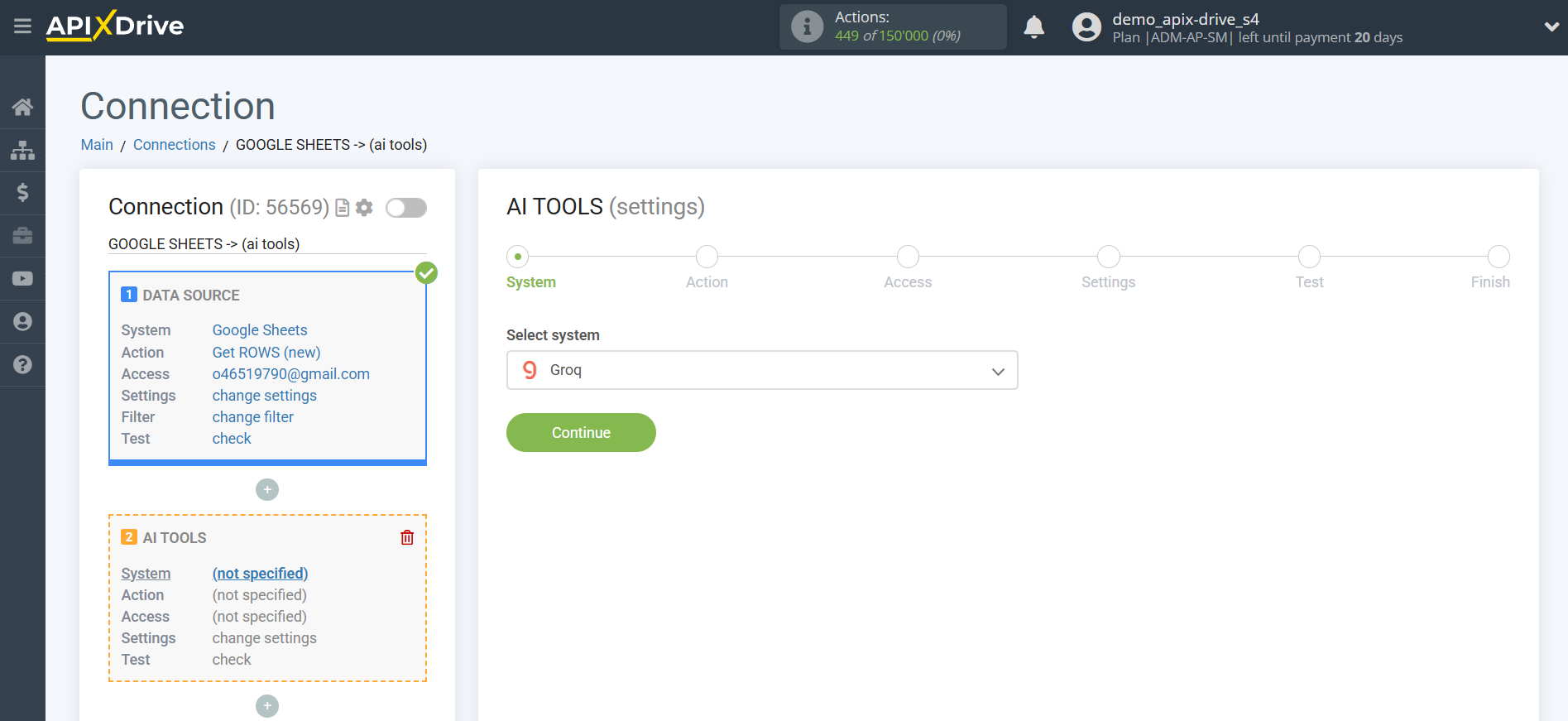
Next, you need to specify the action, for example, "Send PROMPT".
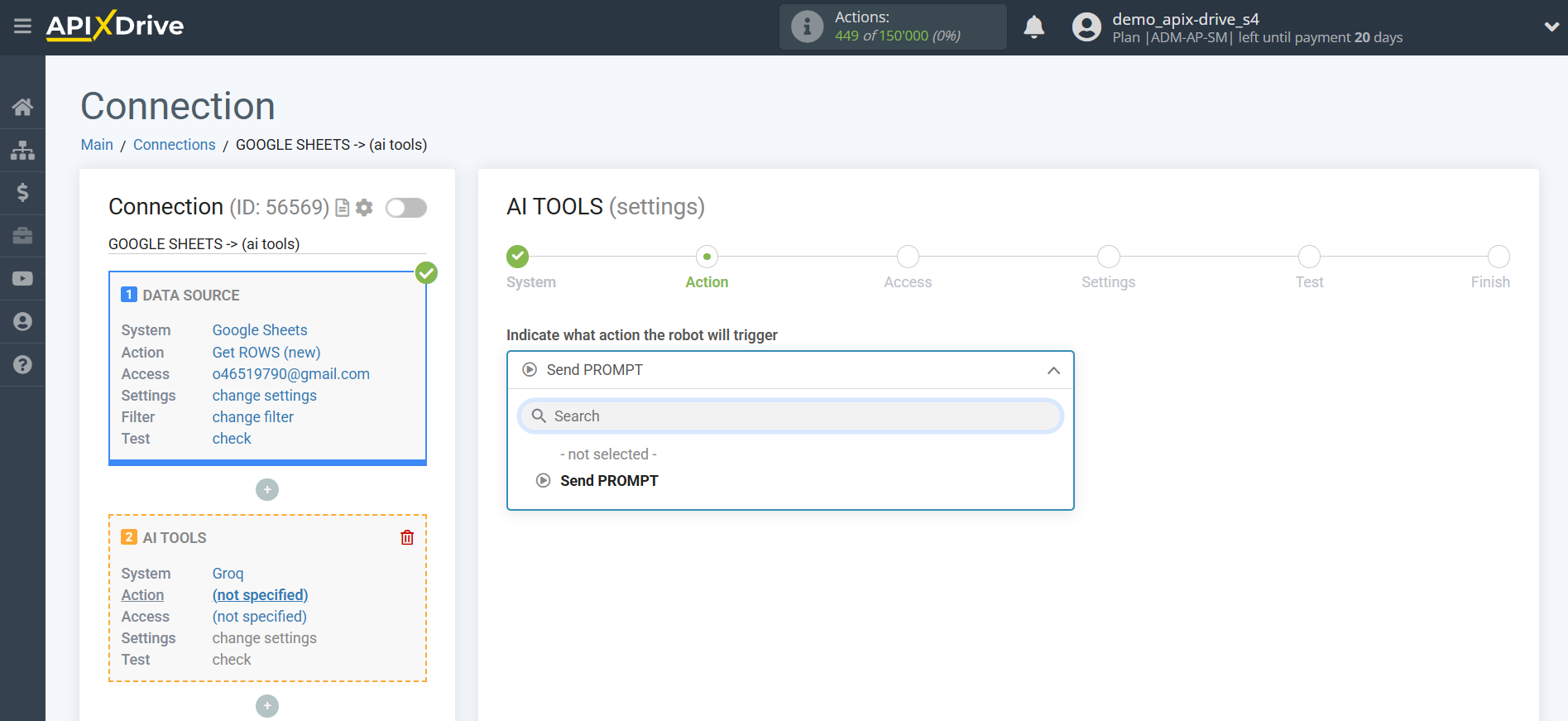
- Send PROMPT - allows you to send a request to Groq for gerating, editing and translating data.
The next step is to select an Groq account.
If there are no logins connected to the ApiX-Drive system, click “Connect account”.
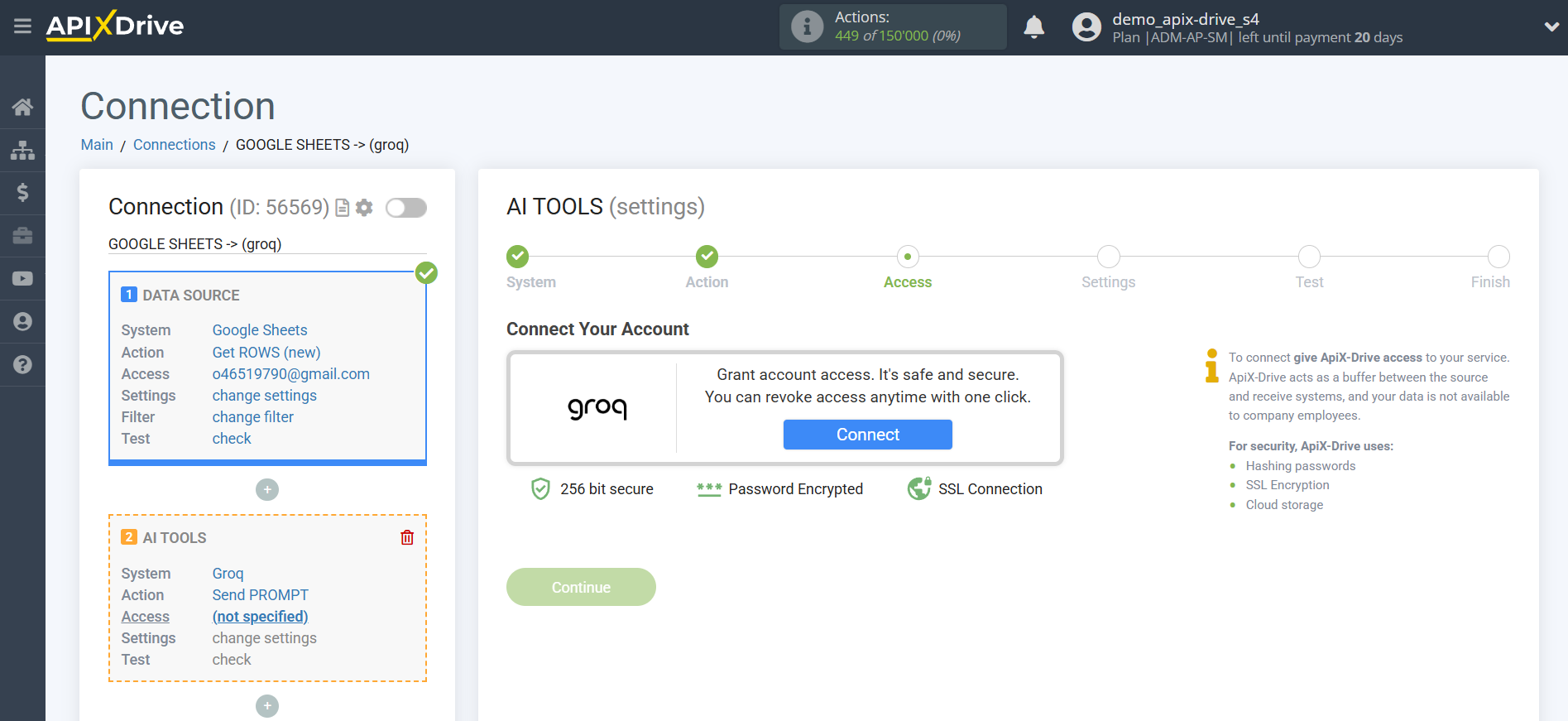
Select which account you want to connect to ApiX-Drive and provide all permissions to work with this account.
Enter the API key found in your Groq account settings.
In your Groq account, go to the "API Keys" tab, click "Create API Key," enter a name for the key, and click Submit. Copy the API key and paste it into the corresponding field in the account connection window in the ApiX-Drive system.

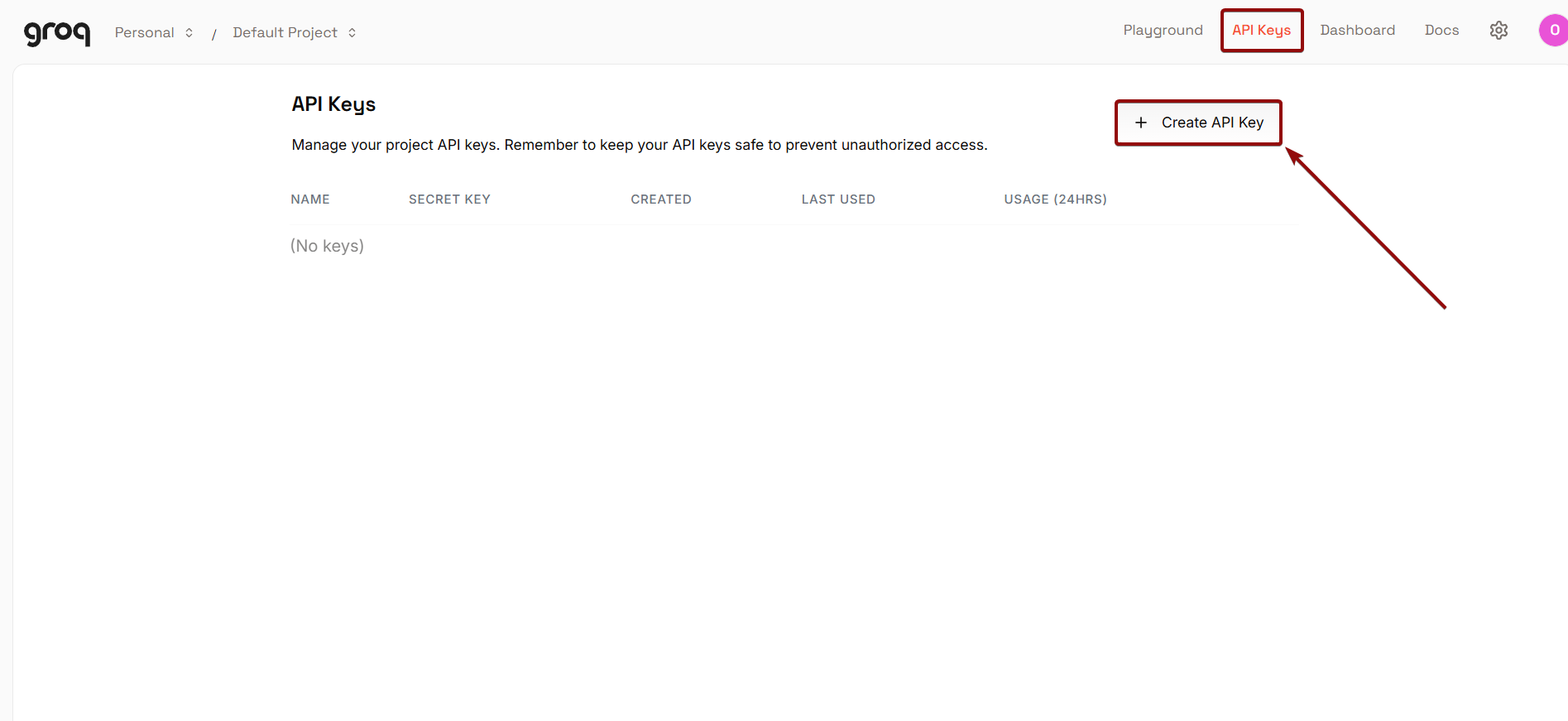
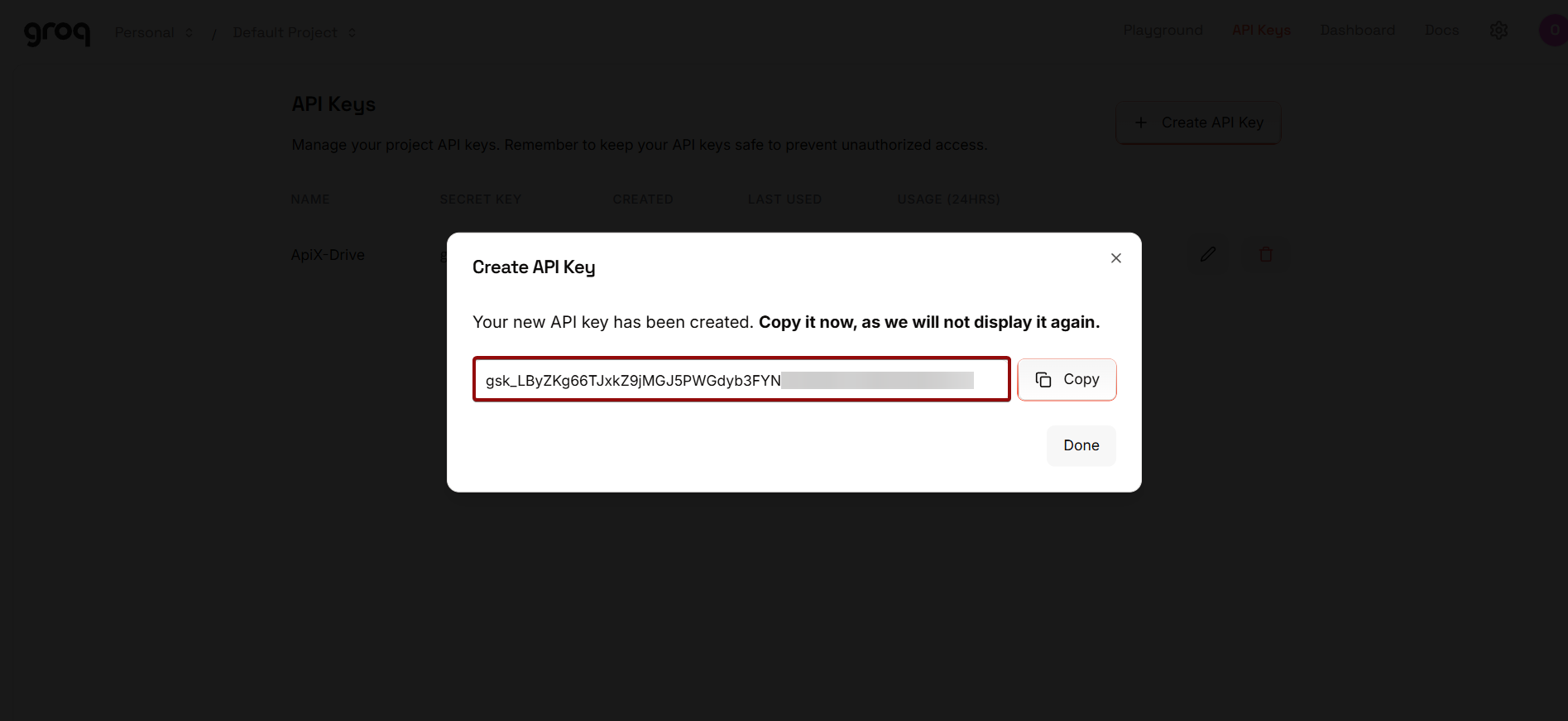
When the connected account appears in the "active accounts" list, select it for further work.
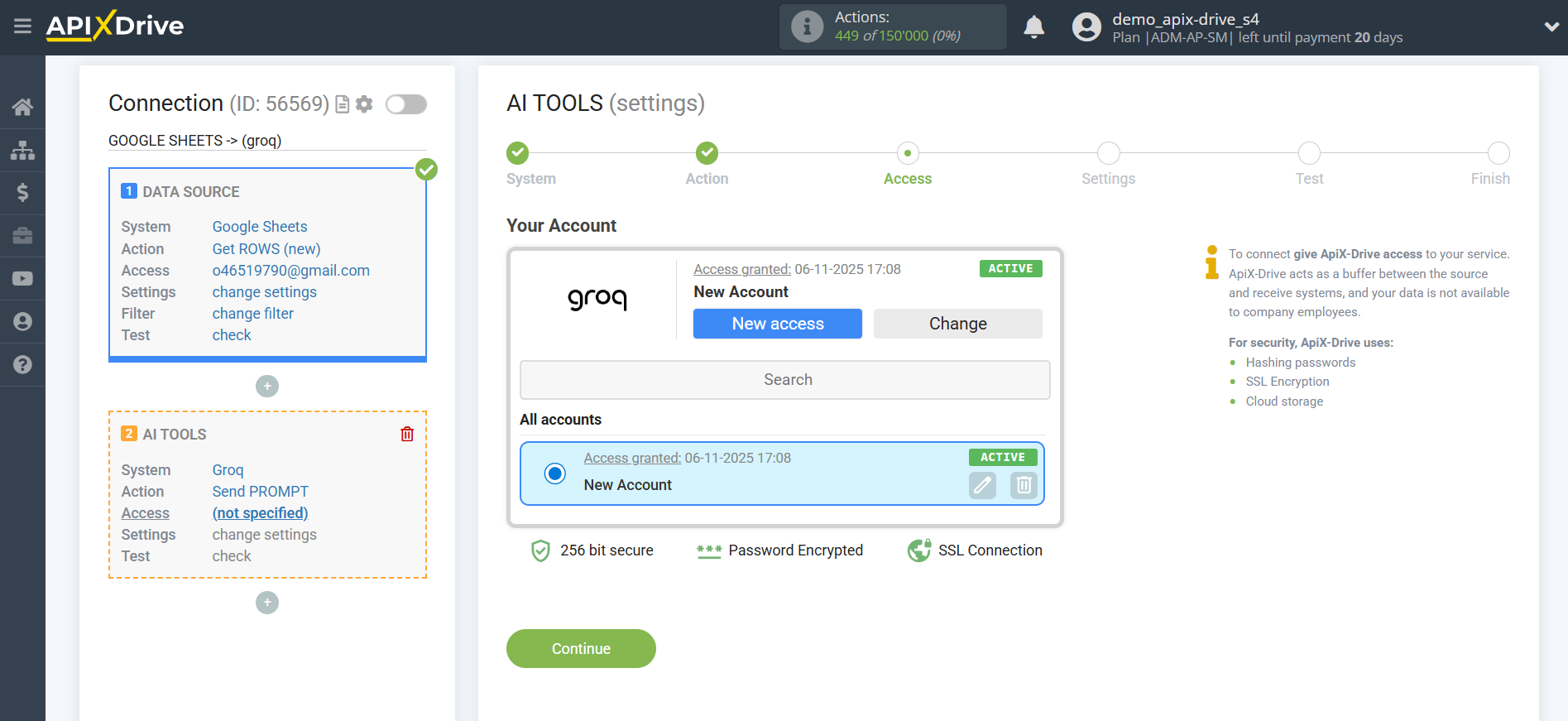
Now you need to select a Groq model. The choice depends on your needs.
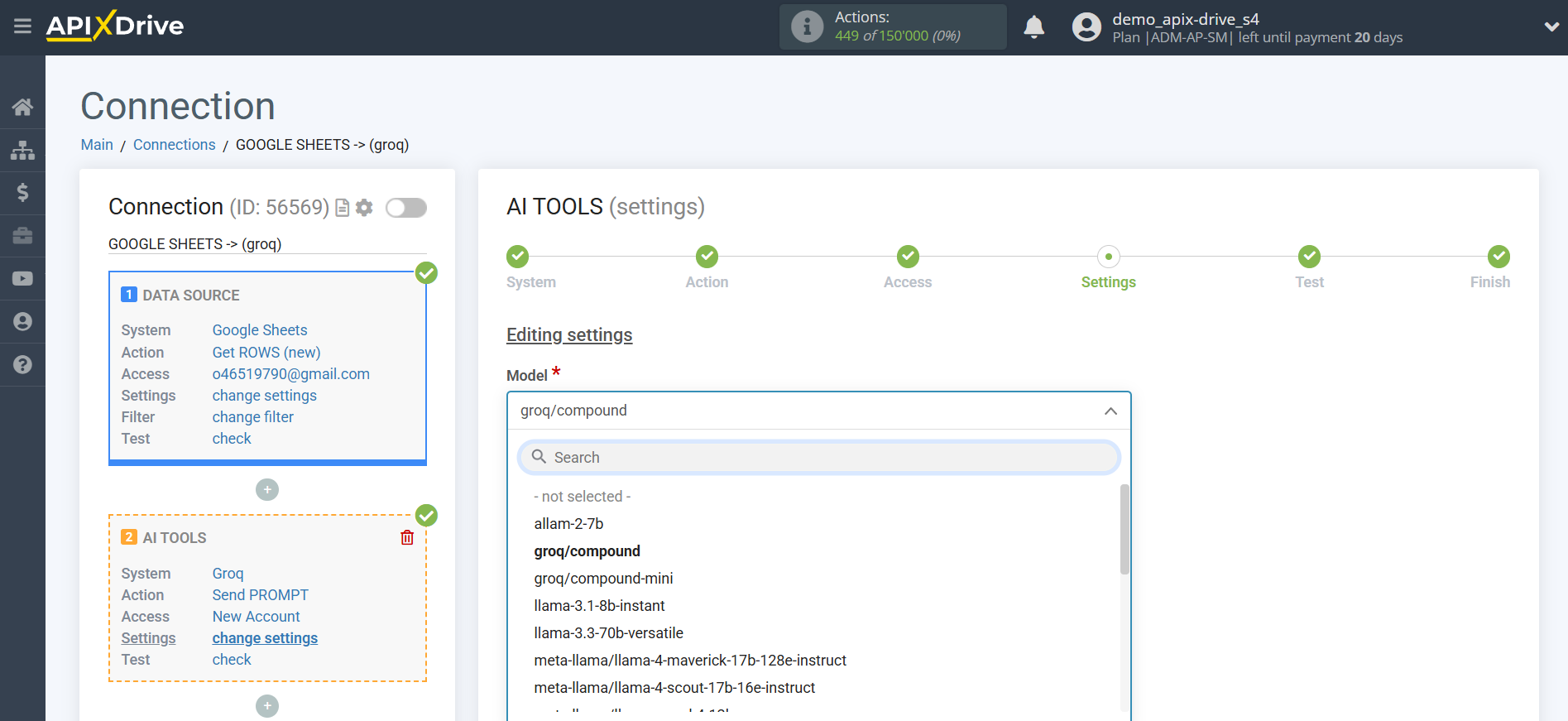
- groq/compound - is an AI model that combines multiple tools (web search, code execution, and analytics) to solve complex problems. It not only generates text but also operates on real-time data. Its key advantages are high speed, accuracy, and the ability to execute multi-step queries without user intervention.
- meta-llama/llama-guard-4-12b - is a model from Meta designed for content moderation and security in AI systems. It analyzes text to detect and block dangerous, toxic, or sensitive content. The model is characterized by high accuracy, speed, and flexibility in customization for different security policies.
For this example, we'll select "groq/compound."
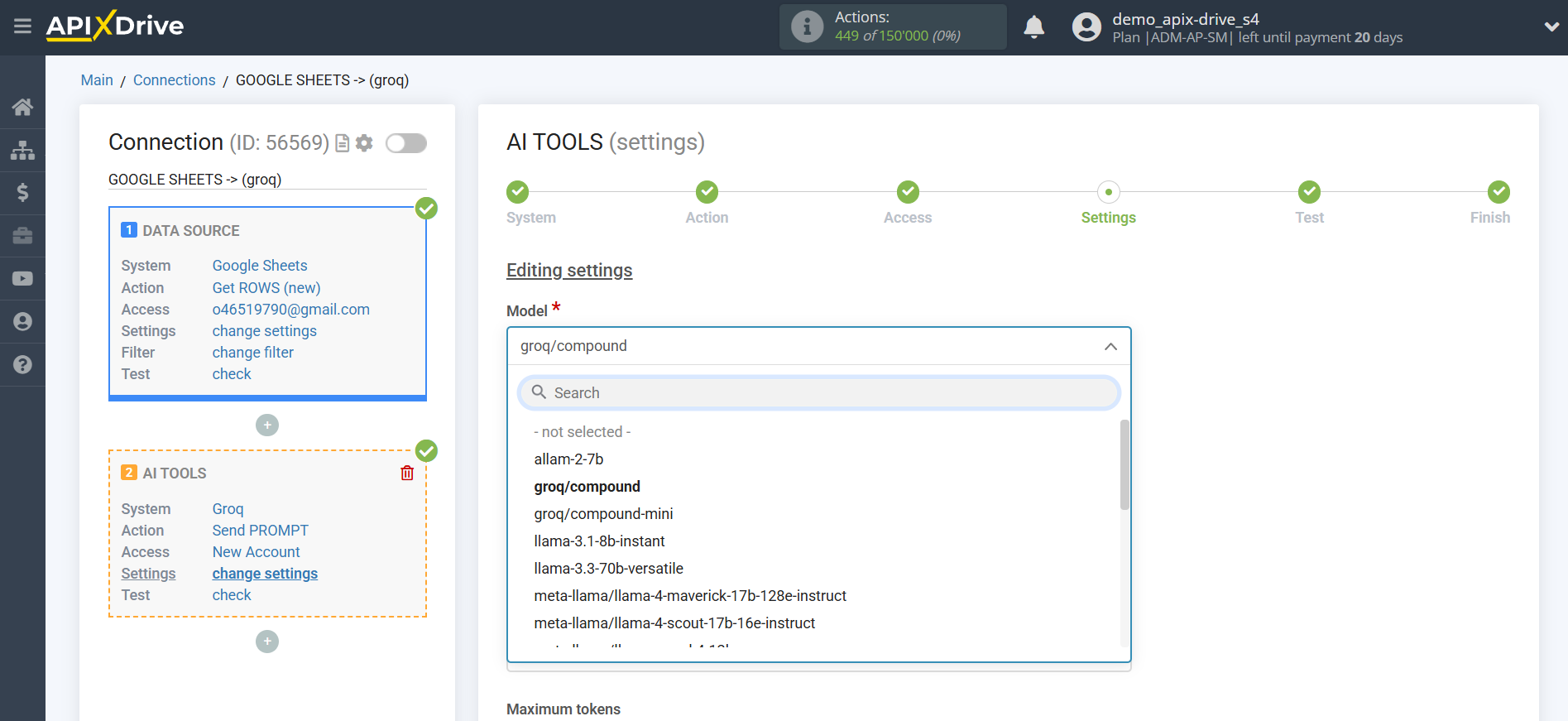
- Prompt - in this field, you must specify which variable in the Data Sources table contains the data that will be queried on the Groq server; in our case, this is column "A."
- Maximum tokens - this is the maximum number of words that Groq will generate. 1000 tokens equals 750 words.
- Temperature - can take values from 0 to 2. Higher values, such as 0.8, will make the output more random, while lower values, such as 0.2, will make it more focused and deterministic.
- Frequency penalty - this parameter controls how much the model avoids repeating words or phrases. The value can be set from -2 to 2: a higher value (1-2) means the model repeats less, while a lower value (0 or negative) means it may duplicate phrases more often.
- Top P - determines how creative or cautious the model will be in its word choice. A value closer to 1 makes the answers more varied and creative, while a value closer to 0 makes them more accurate and predictable.
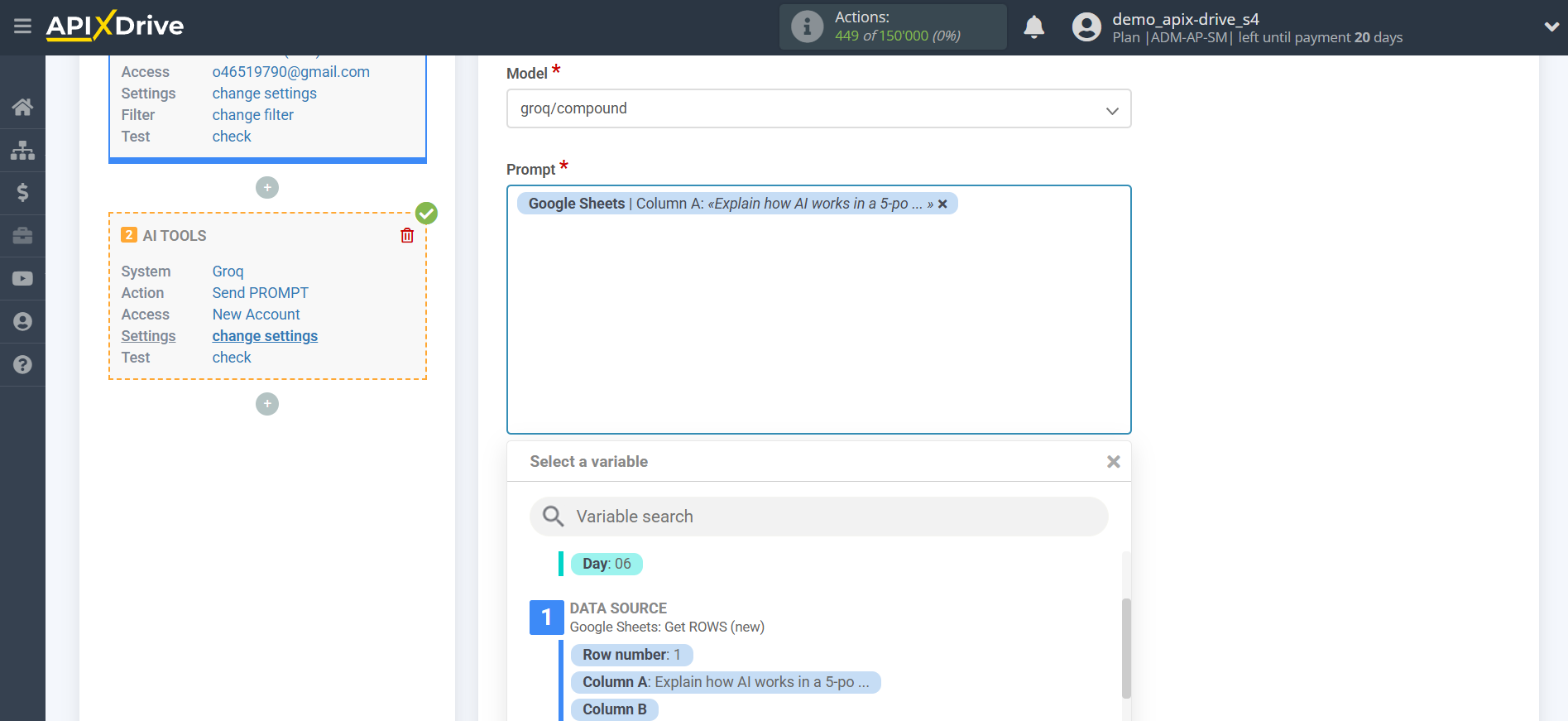
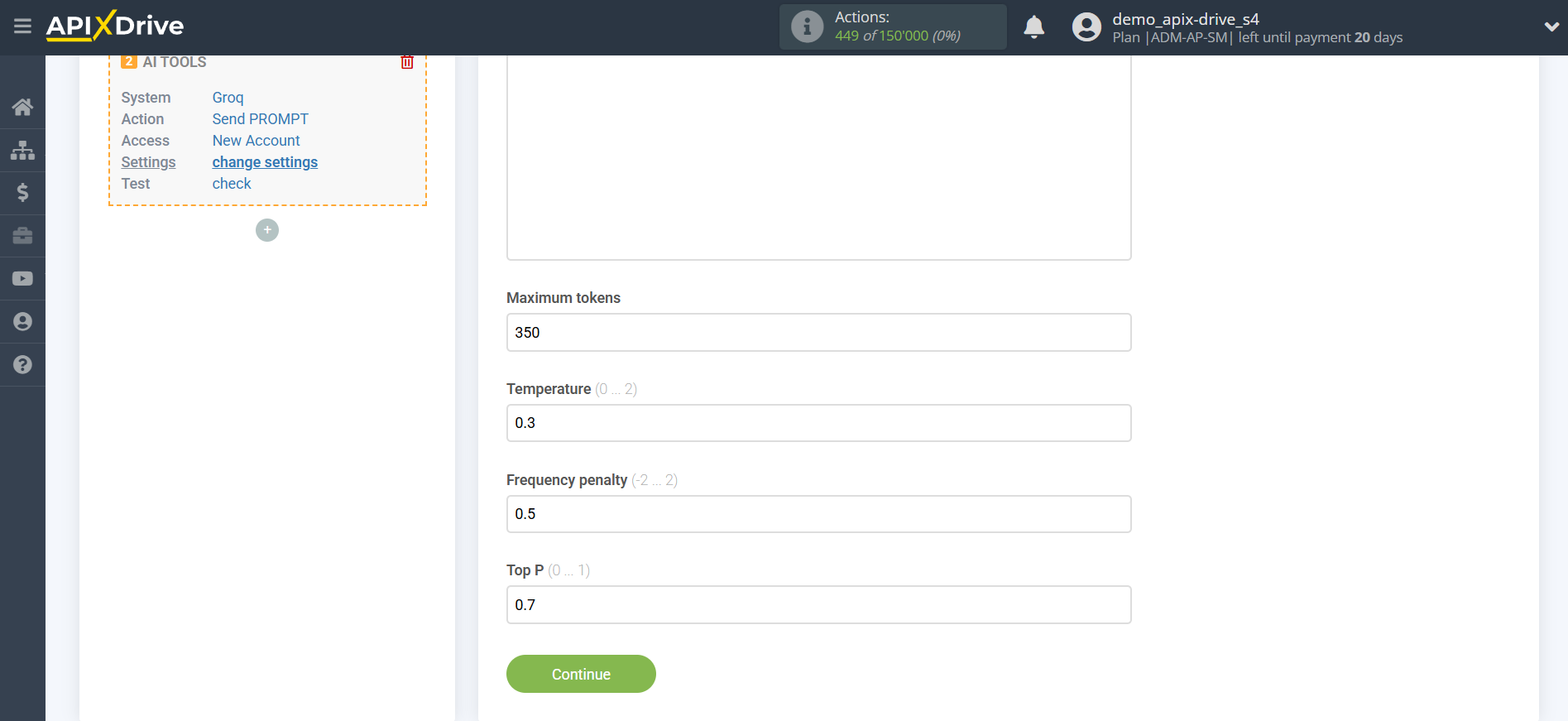
Now you see test data for your request. You can pass this data to your reception table.
If test data does not appear automatically, click "Search in Groq".
If you are not satisfied with something, click “Edit”, go back a step and change the search field settings.
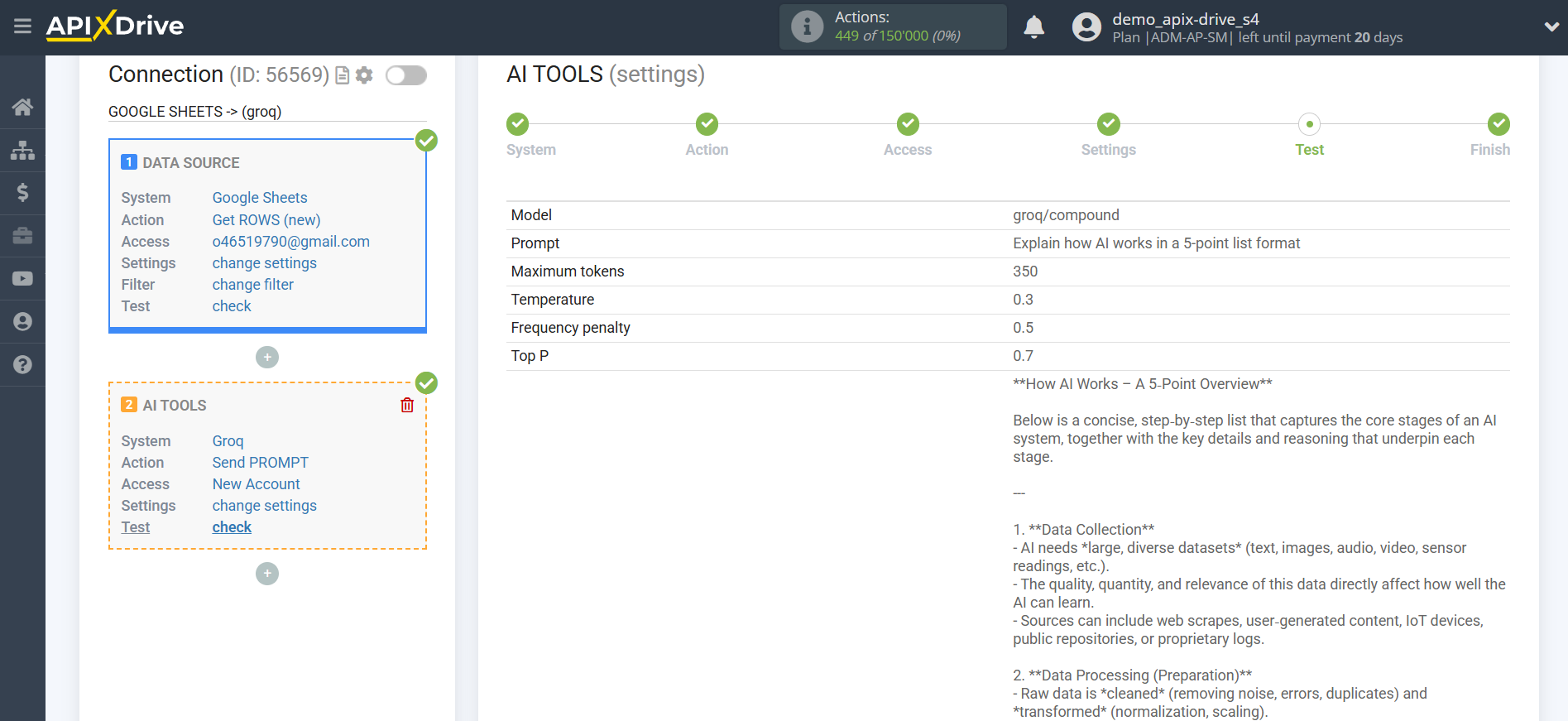
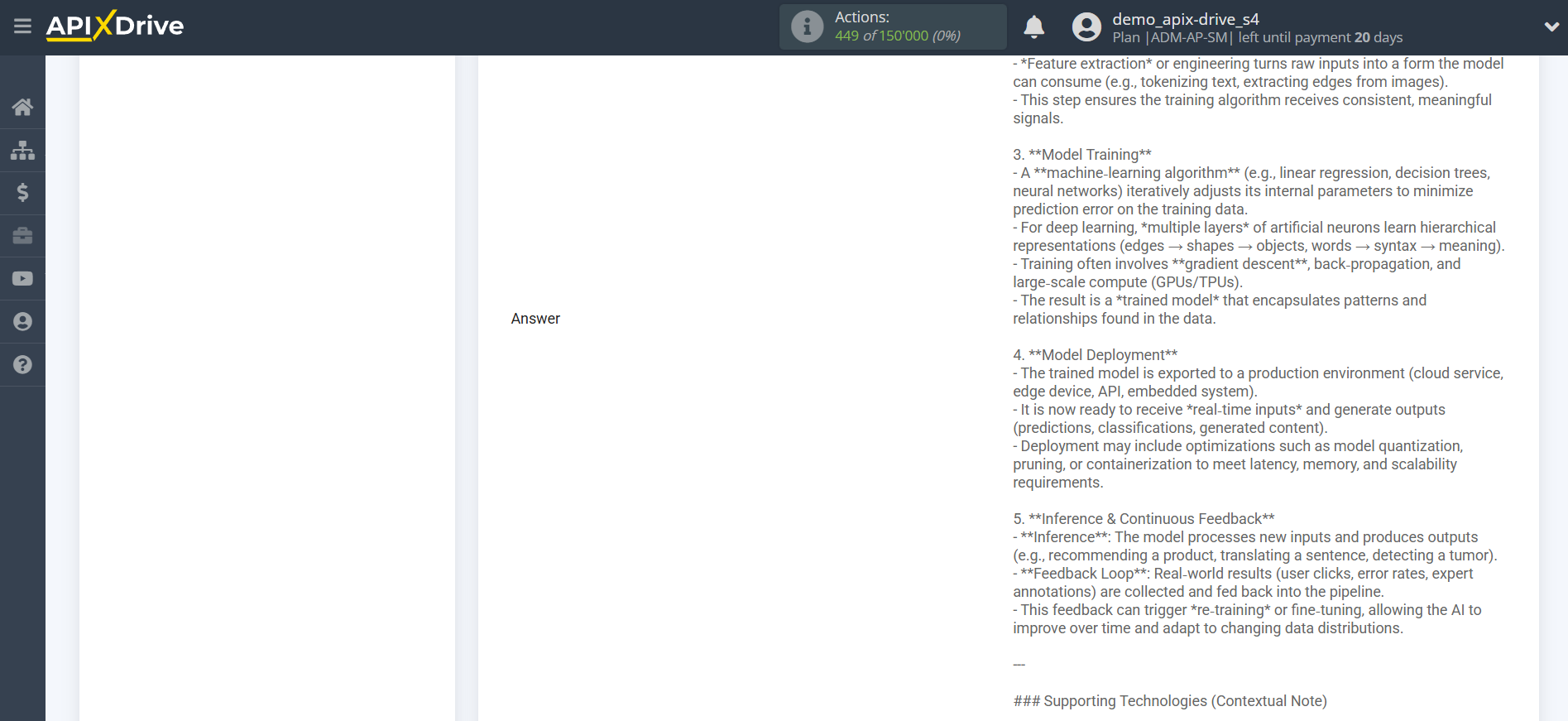
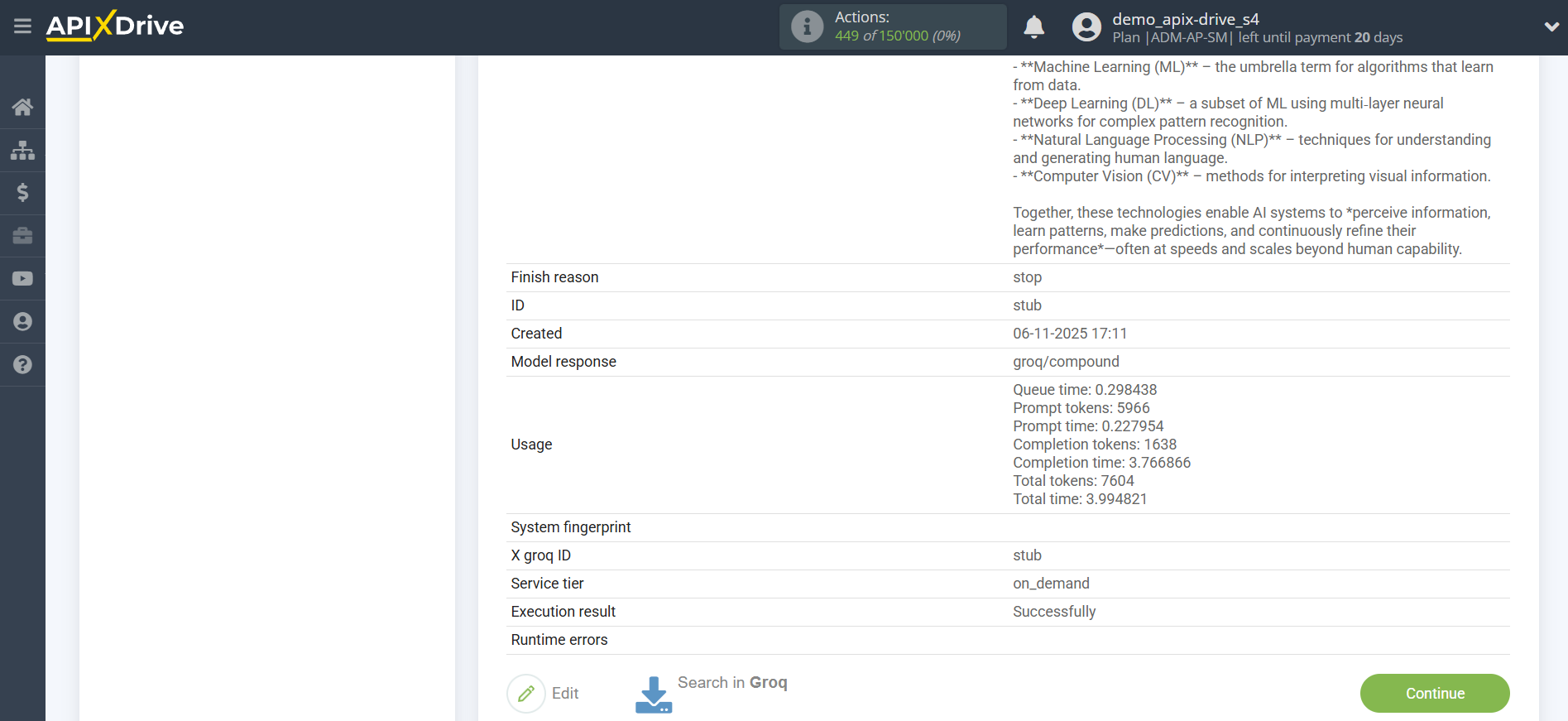
This completes the configuration of Groq data!
Now we can start setting up Google Sheets as a Data Destination system.
To do this, click "Add Data Destination".
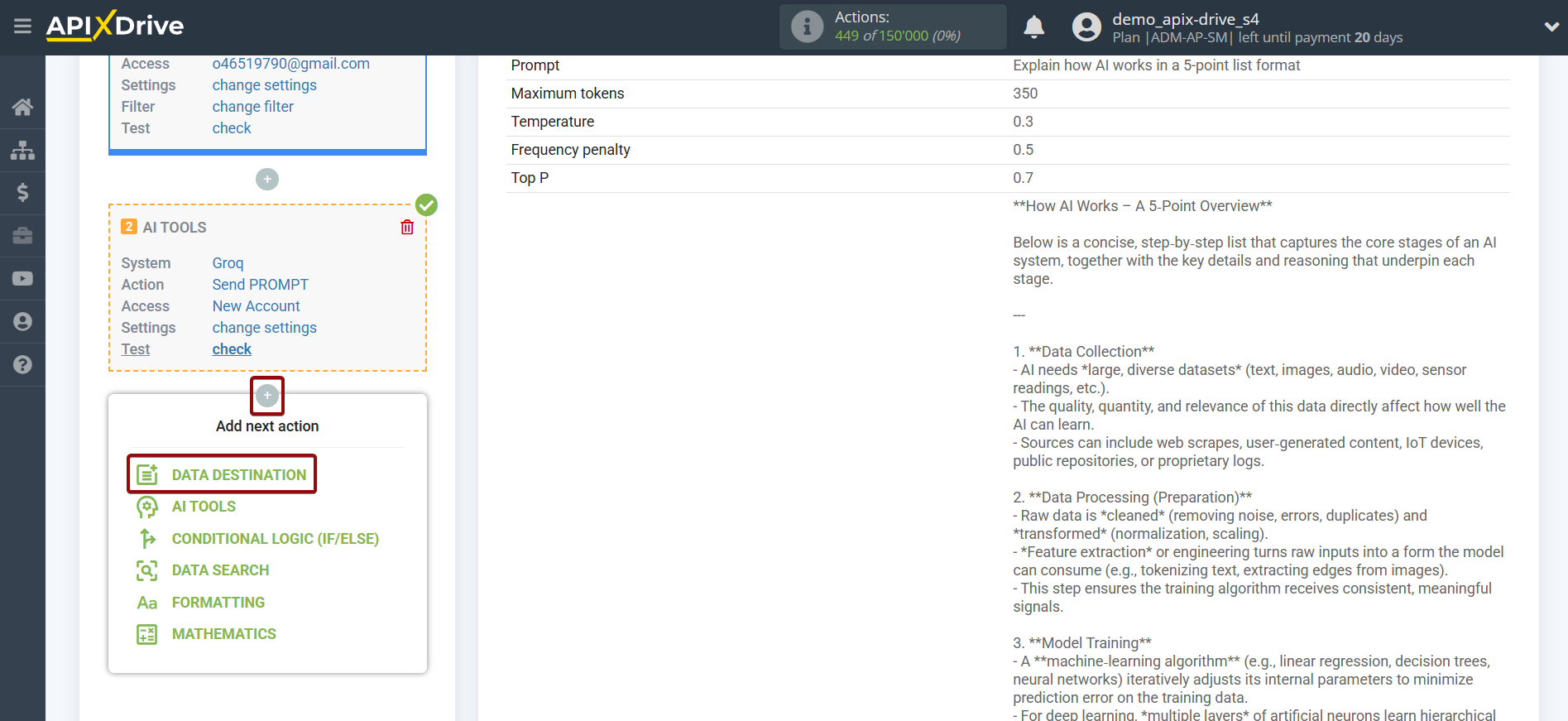
Setup Data Destination system: Google Sheets
Select the system as Data Destination. In this case, you must specify Google Sheets.

Next, you need to specify the action "Update ROW".
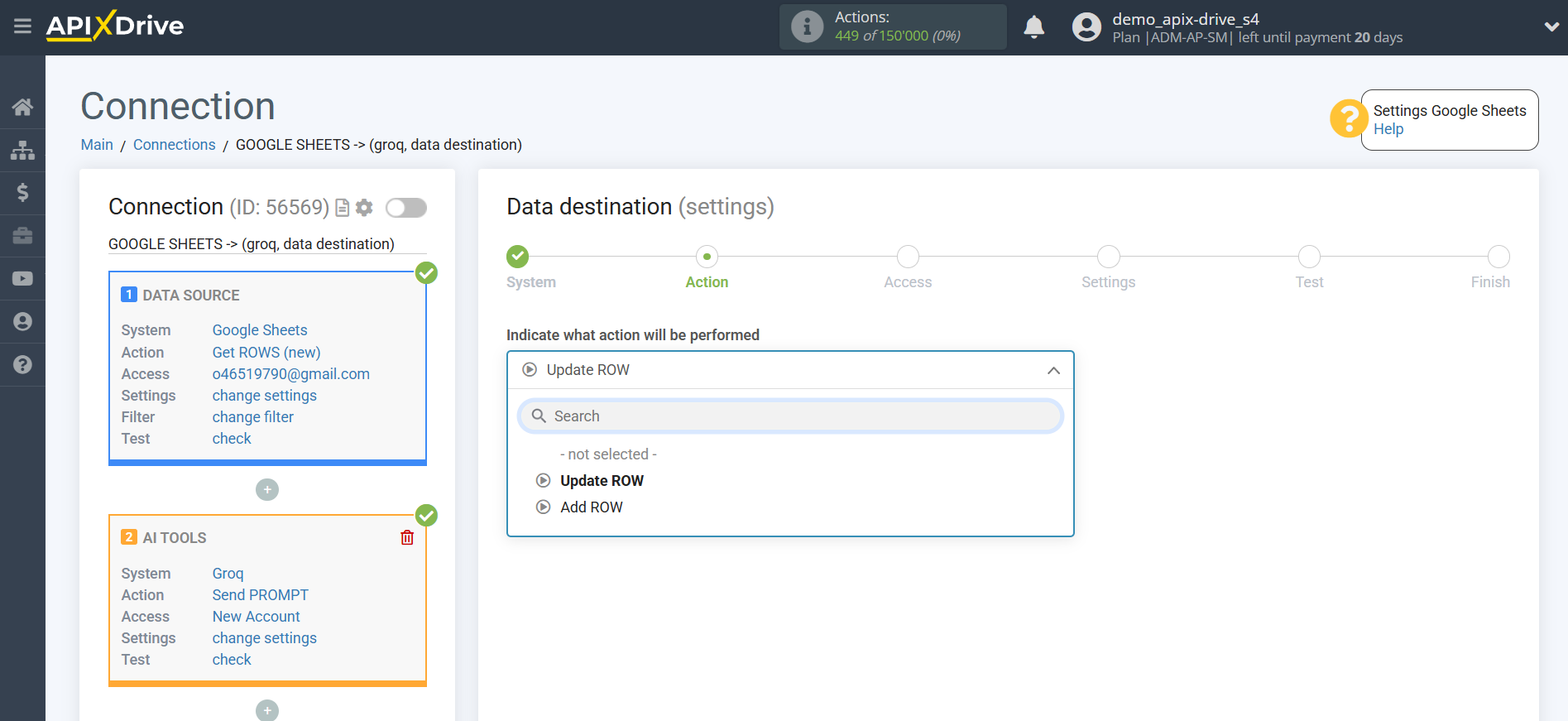
The next step is to select a Google Sheets account into which the result of the Groq request will be transferred. If this is the same account, then we select it.
If you need to connect another login to the system, click “Connect account” and repeat the same steps described when connecting Google Sheets as a Data Source.
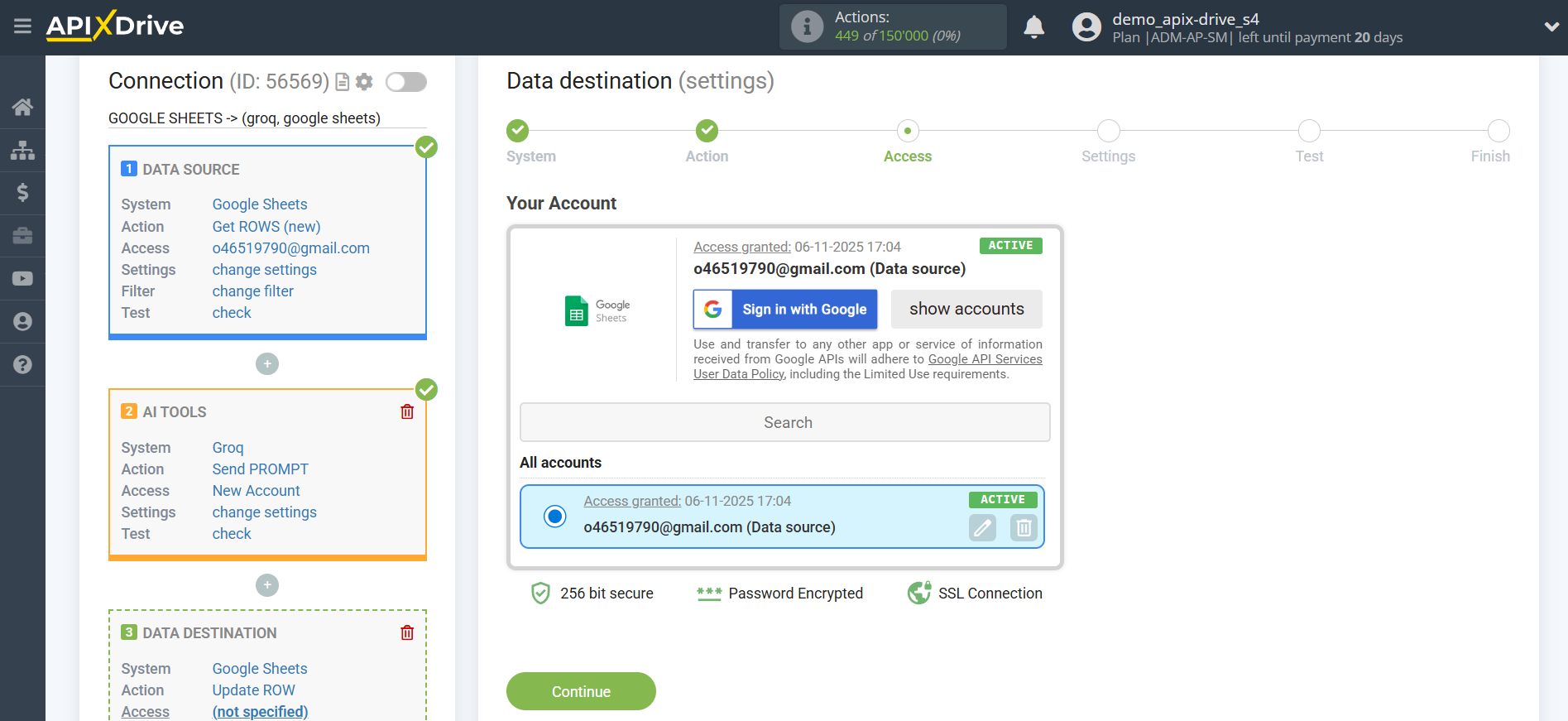
Now you need to select the File (Table) and Sheet in which the status of Groq will be updated.
In the "Search column" field, you need to select the column by which the data will be searched. That is, where to look for data in the table.
Next, in the "Search" field, you need to select a variable from the drop-down list or enter the data manually, by which value the system will search for data to update the row you need. In our case, we select column "A", which contains the data about the request. The system will update the data in the desired row only if it matches the requested data.
Also, you need to specify the Search Type, in case several rows with the same query are found:
"First found row" - searching and updating data will occur in the first found row that satisfies the search conditions.
"Last found row" - searching and updating data will occur in the last found row that satisfies the search conditions.
"All found rows" - search and update of data will be performed on all found rows that satisfy the search conditions.
Now you need to assign a variable with the result of the query, which we take from the Data Search block, to the empty column. In the future, this column will be updated according to your request.
After setting, click "Continue".
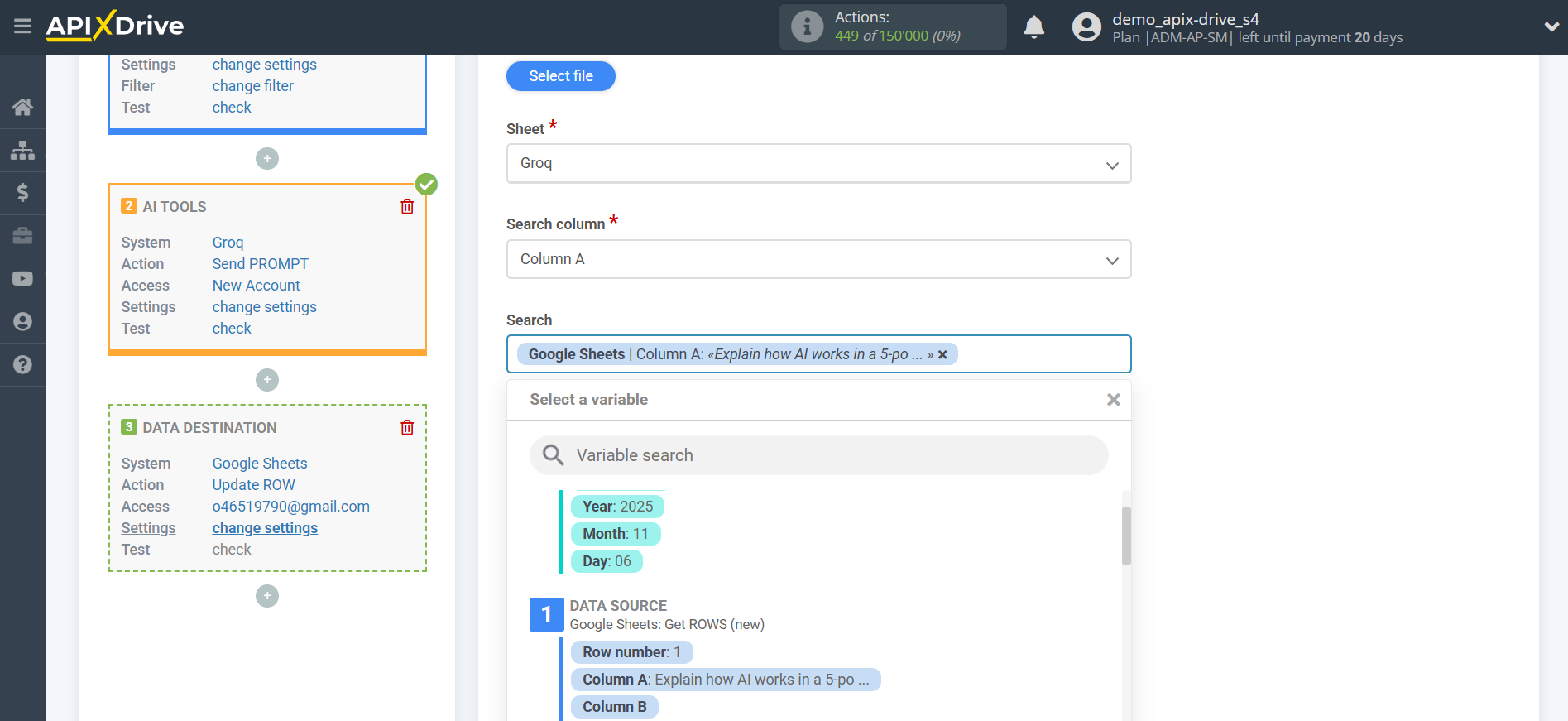
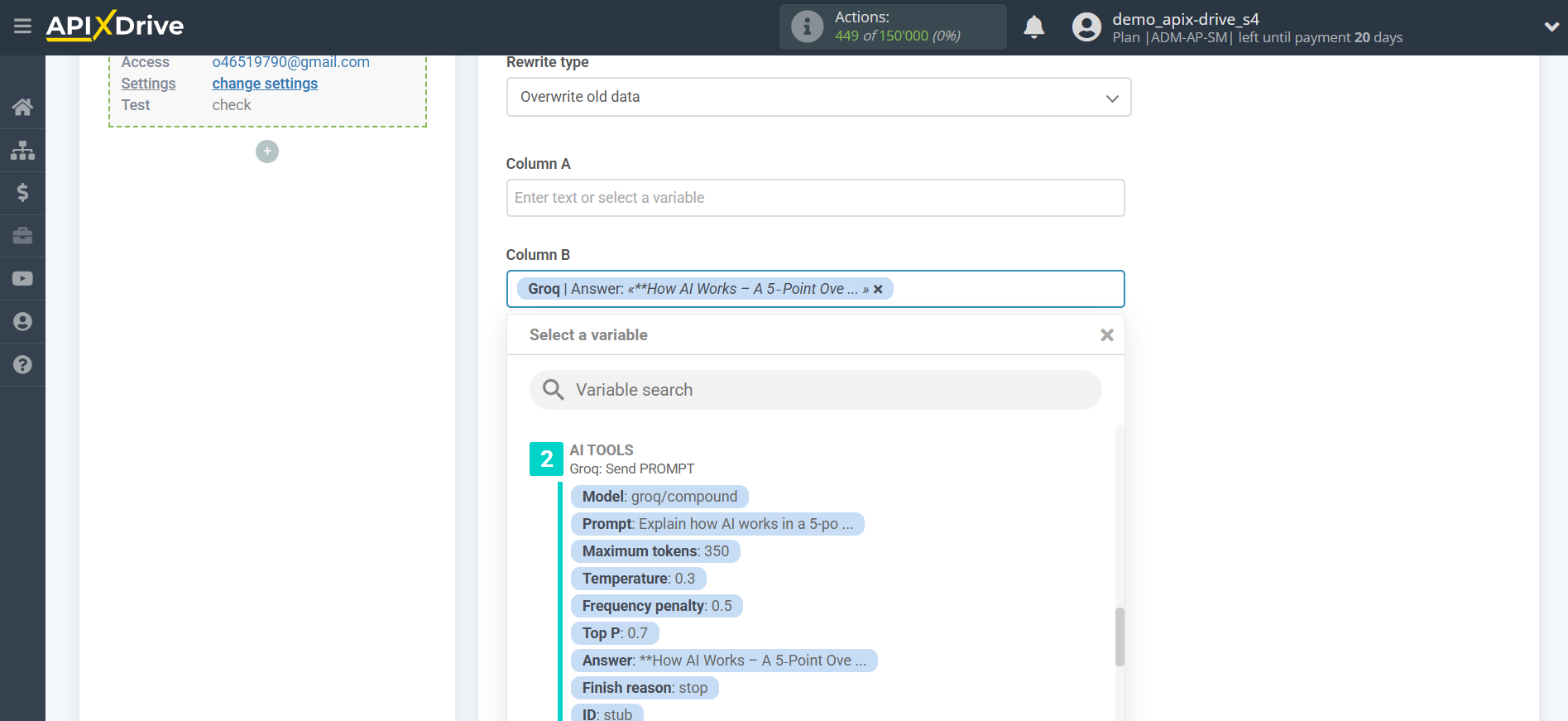
Thus, the AI TOOLS block takes the field in the Data Source in which you have written the request text, queries the Groq for the result of this request and transfers this data to the Data Destination field, for example, in column “B”.
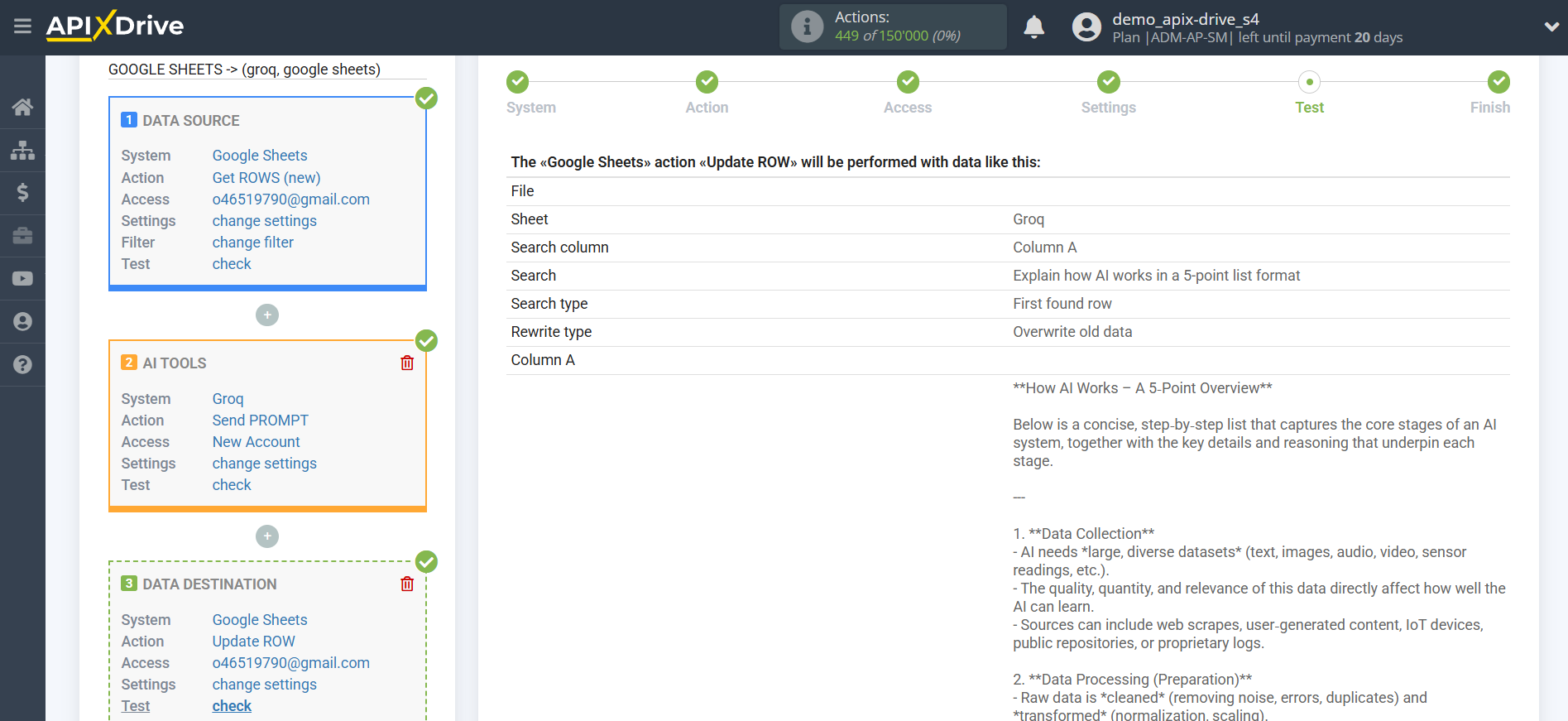
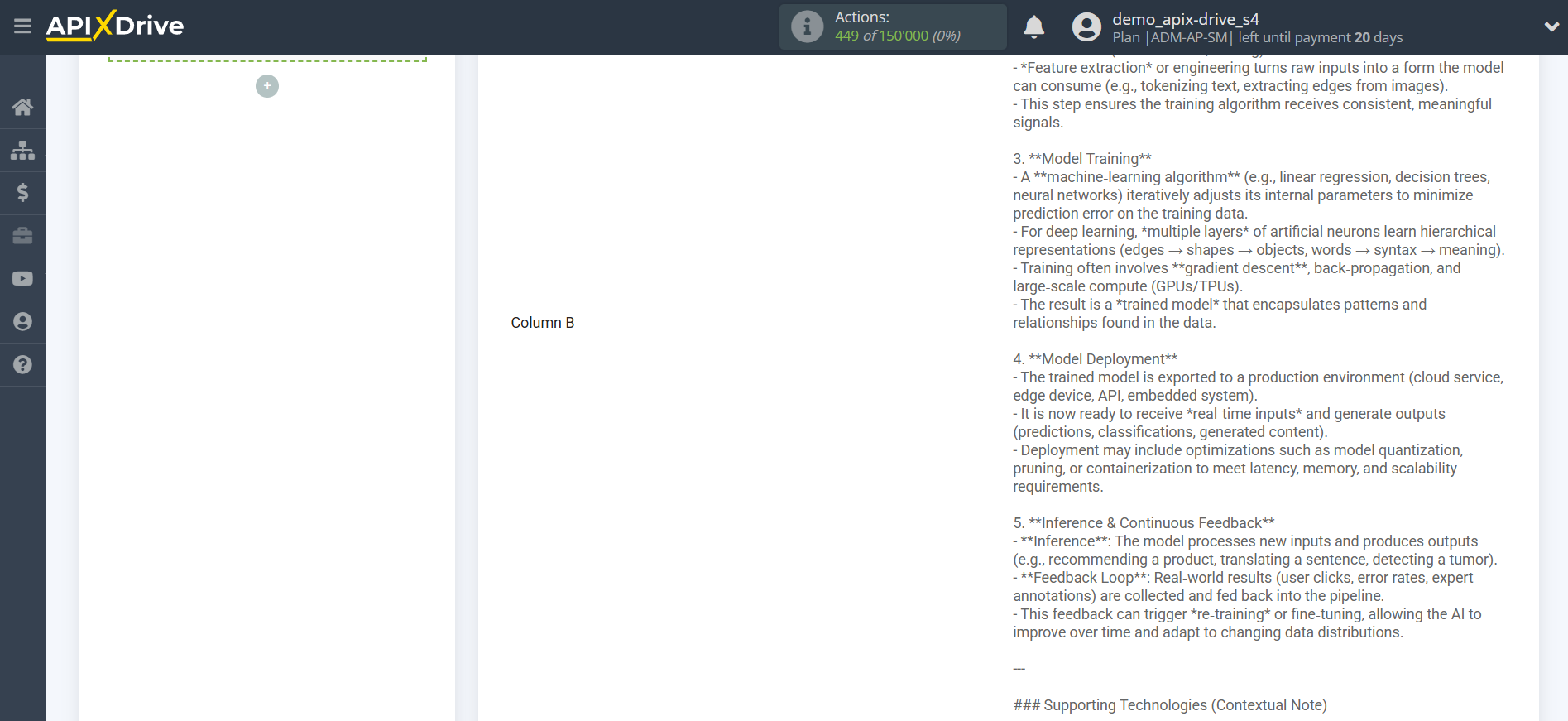
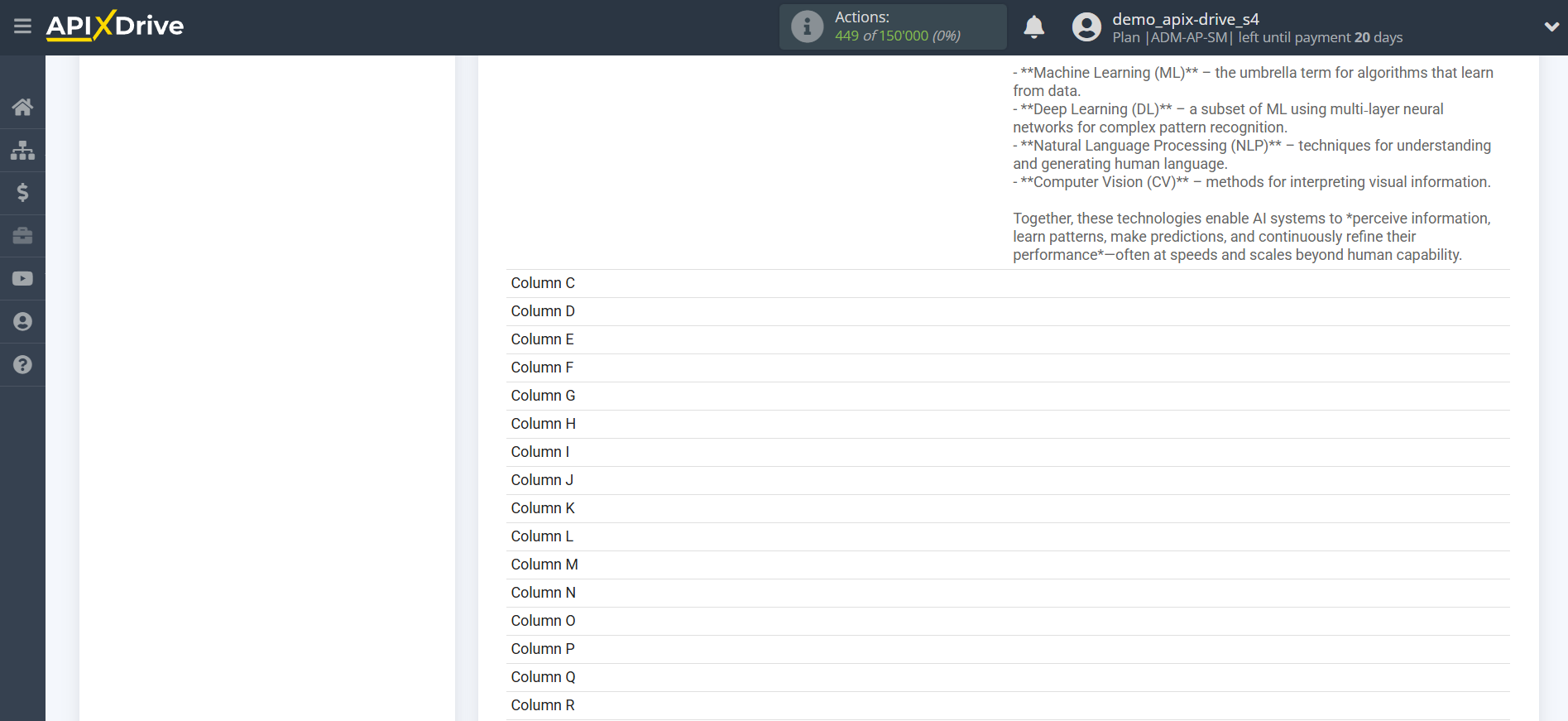

This completes the Data Destination system setup!
Now you can start choosing the update interval and enabling auto-update.
To do this, click "Enable update".
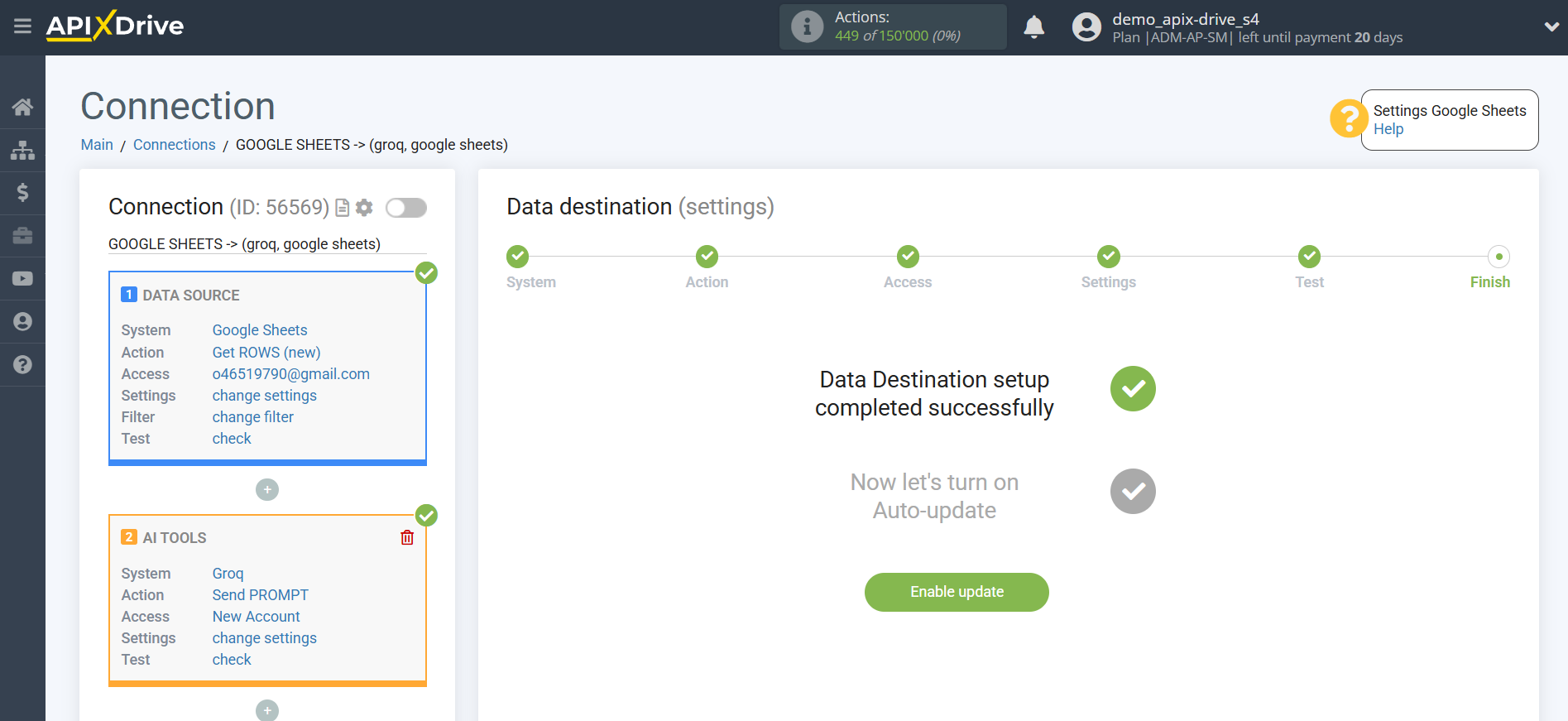
On the main screen, click on the gear icon to select the required update interval or set up scheduled launch. To start the connection by time, select scheduled start and specify the desired time for the connection update to fire, or add several options at once when you need the connection to fire.
Attention! In order for the scheduled run to work at the specified time, the interval between the current time and the specified time must be more than 5 minutes. For example, you select the time 12:10 and the current time is 12:08 - in this case, the automatic update of the connection will occur at 12:10 the next day. If you select the time 12:20 and the current time is 12:13 - the auto-update of the connection will work today and then every day at 12:20.
To make the current connection transmit data only after another connection, check the box "Update connection only after start other connection" and specify the connection after which the current connection will be started.
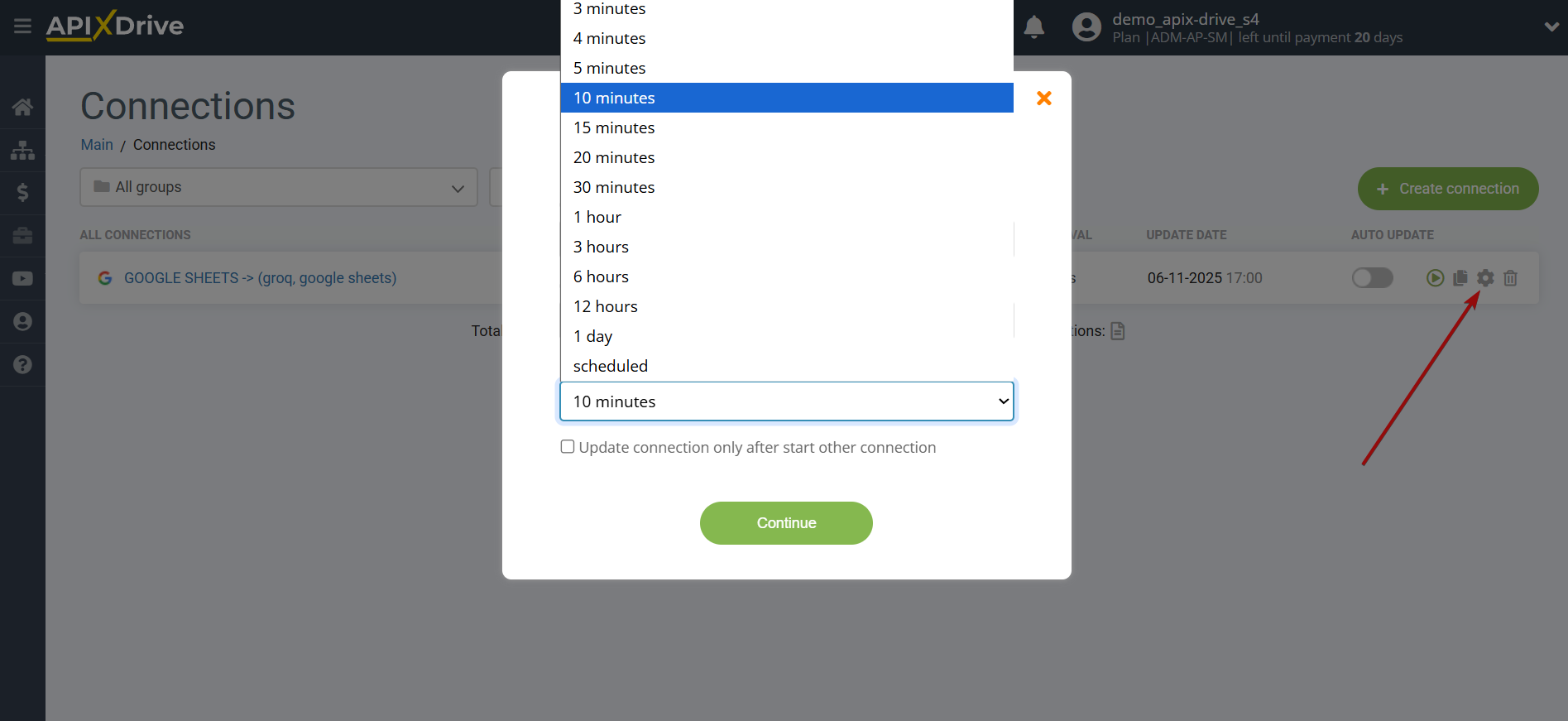
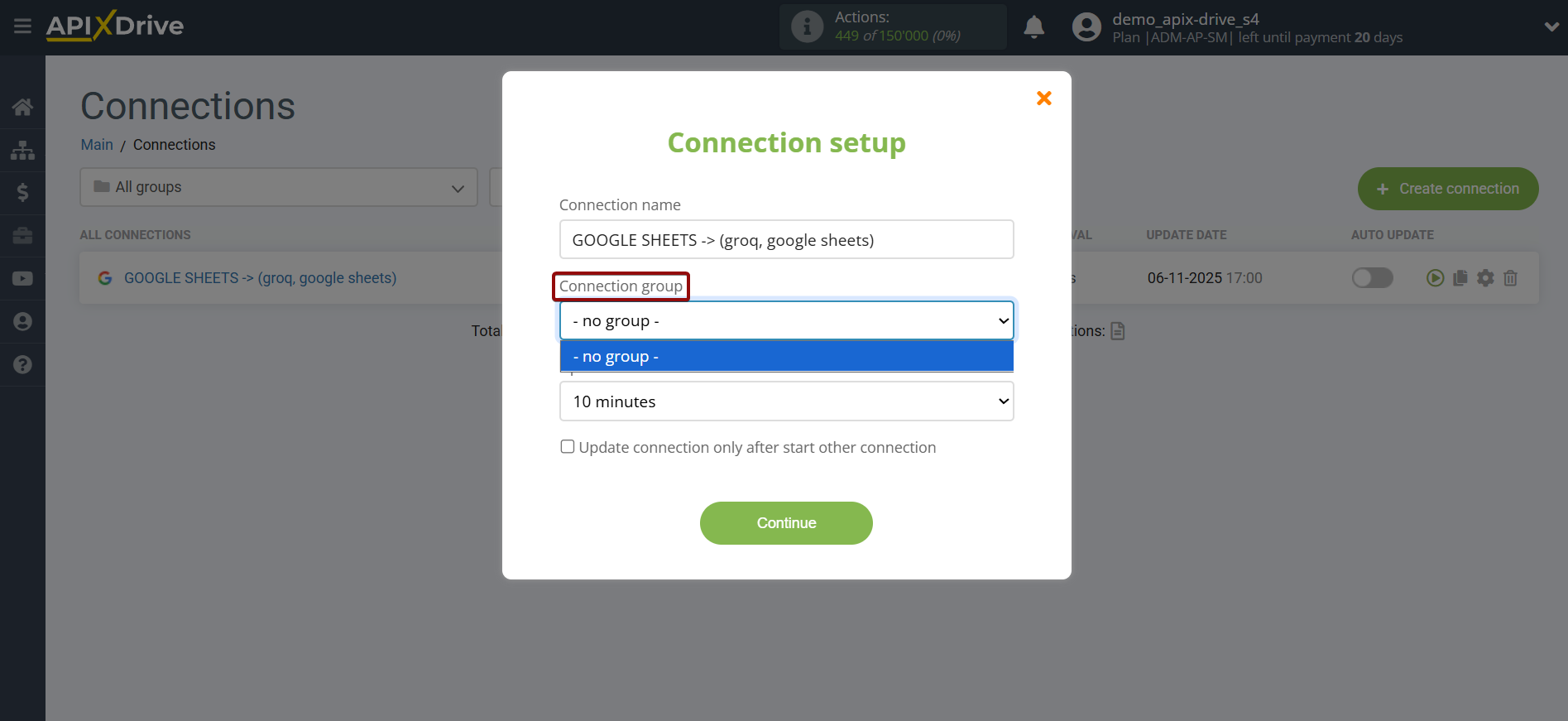
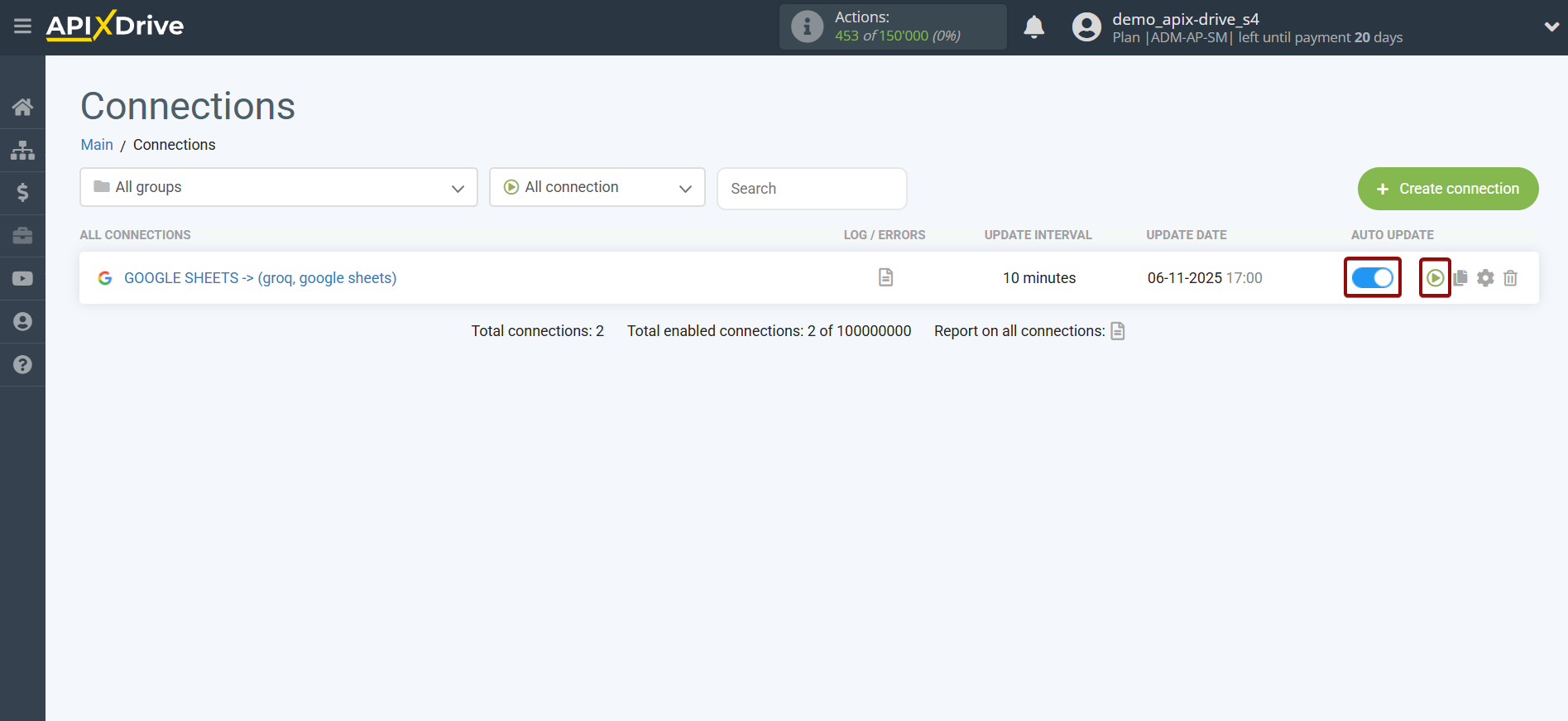
This completes the setup of Groq! Everything is quite simple!
Now don't worry, ApiX-Drive will do everything on its own!